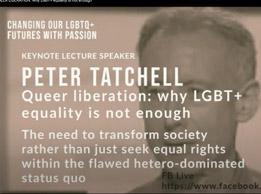
115 minute read
QUEER LIBERATION

QUEER LIBERATION: WHY LGBTQ+ EQUALITY IS NOT ENOUGH
Advertisement
Gscene, along with Brighton & Hove Pride, commissioned a series of lectures for Pride Week 2020. Guests were invited to choose their own subject. Starting this issue with Peter Tatchell’s lecture, Dr Sam Hall’s will follow next month. Both are available to watch on YouTube. These are edited versions of the transcripts, in parts using paraphrasing to retain the sense.
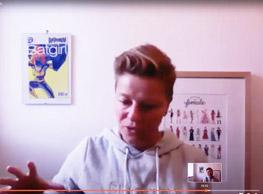
) My starting point is that equality is now the mantra of the UK and indeed global LGBTQ+ movement, so the idea that equality is not enough is very controversial and challenging. Although equality has much to recommend it, I don't feel comfortable with the way most of our community has lowered its aspirations to the limited goal of equal rights. They are important, but they are not enough. I ask the question, whatever happened to the lofty ideals of queer liberation and sexual freedom? Where did they go? We have too often moved away from defining our needs and fallen meekly into the prevailing heterosexual consensus. Look at same-sex marriage. Winning marriage equality was tremendously important, and I was spearheading that campaign from way back. I agree that homophobic discrimination against same-sex couples is wrong, that it had to be challenged because it was a form of anti-LGBTQ+ discrimination, but I would ask the question, do we really think that the model of marriage is the best framework for recognising relationships whether opposite sex or same-sex? My argument would be that if we were starting from scratch, the marriage model wouldn’t be the one that we would adopt. It is too dogmatic and inflexible. Regardless of different diverse relationships and lifestyles, the marriage model is based upon a long tradition of the way in which the law recognises relationships. We need a more democratic egalitarian alternative. The way in which we just conceded the argument that marriage is the gold standard of relationship recognition shows a lack of imagination and a bowing down before a model of relationship recognition and rights that was devised by straight people, not by us. The end result of merely accepting equality is that the dominant agenda is about equal rights and law reform rather than transforming society. We don't question what we want, equality within the status quo, and this is very much an agenda about conformism and assimilation. It doesn't acknowledge that we queers, out of our history and experience, may have better ideas, may have alternatives that we could produce instead of what exists. This political retreat represents a massive loss of imagination, confidence and vision. Equality is important, but it's not sufficient, it's not the panacea that many people claim. Now equality for LGBTQ+ people inevitably means parity on straight terms within a preexisting framework of values, laws and institutions. These have been devised by and for the straight majority, not by us. Equality within their system involves conformity to their rules. This is a recipe for submission and incorporation, not genuine queer liberation.
Although getting rid of homophobic discrimination is a laudable aim which I support, it doesn't go far enough. Ending anti-LGBTQ+ bias will not resolve all the problems faced by queer people. Some of our difficulties arise not simply from homophobia, biphobia or transphobia, but also from the more general erotophobic and sex- negative nature of contemporary culture, which also
harms straight and cisgender people. You can see this in the way in which sexnegative attitudes are evident in the censorship of sexual imagery, the inadequacy of sex education lessons, the criminalisation of sex workers, the outlawing of consensual sadomasochistic relationships and of course the criminalisation of teenagers who have sex with each other before the lawful age of consent. In those different ways we see that the anti-sex culture is still deeply ingrained in our society. I want to emphasise that the drawbacks associated with seeking mere equality are not limited to our community, they apply to women who are usually forced to compete on male terms to get ahead in the workplace. They apply to black people who tend to only succeed if they adopt a white middle-class lifestyle and assimilate into the dominant European culture. Both women and ethnic minorities have discovered to their cost that the equal rights agenda is not about respecting difference and validating it, it’s mostly about obliterating it. So where is the dignity in that? How can we have self-respect if we sacrifice our queer identity and our queer culture for the sake of parity? It is acceptance, but acceptance at a price that is not worth paying.
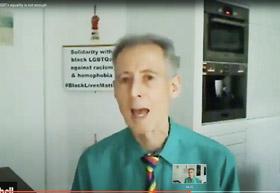
Moreover, equal rights does not equate with genuine freedom despite formal legal equality between the sexes in Britain for decades, women's earnings are still only four-fifths of men, and of course years after the end of racially discriminatory statutes in the United States, informal segregation affecting black communities persists. It's not enforced by segregation like it once was but there's informal segregation based on economic inequality where black and white communities live very separate lives and as the Black Lives Matter movement has shown police brutality and murders are still commonplace, and poor black people in America are still locked out of economic success.
These lessons are lessons that we queers have to take on board. The same fate will befall us if we jump on the limited agenda of equality. We will end up with equal rights, but within a flawed, unjust society where for us the rules are skewed against sexual choice and selfdetermination. The rules are skewed against our own unique insights, experiences and lifestyle relationship models. Equality for queers is a political deal that leads to social assimilation. We assimilate into, accommodate to, fit in with society as it is, and that implies that we ourselves are pretty much worthless, that we have nothing to give society. If we go down that road, a condition of equal treatment is that LGBTQ+ people are expected to conform to the straight system, to its norms and aspirations. I think we’re witnessing the increasing cooption and invisibilisation of LGBTQ+ people. You can say we’re everywhere more than ever, on TV and in public life. That's true, but we are there as facsimiles of straight people and their values, lifestyles and aspirations, so the end result is that we get equality, but the price we pay is the surrender of our own unique distinctive queerness. The insights and ethics that have forged our response to being excluded and discriminated against by a hostile straight world. Out of this suffering we’ve developed worthwhile understandings, insights, experiences and other ways of living which straight people could learn from, and we need to hold on to that. heart of LGBTQ+ equality and law reform is that we queers will behave respectably. That we will comply with the heterosexual moral agenda. So no more cruising, orgies, sex clubs, sadomasochism, and even if none of that is your thing we need to defend the right of others who do. In return, the contract is that the good gays get equal treatment, meanwhile some of the sex repressive social structures, laws, values, institutions, remain intact and the bad gays remain sexual outsiders.
This kind of LGBTQ+ reformism involves an abandonment of any critical perspective on straight culture. We don't distinguish between the good aspects and the bad. We don't make an assessment about what is worthy of queer liberation and what is not. In place of a healthy scepticism, which I think is a great public virtue, towards the heterosexual consensus, we're substituting a naive acquiescence. Discernment is abandoned in favour of compliance. We trade our souls for the gift of equal rights. Increasingly advocates of LGBTQ+ equality never question the status quo. They take it for granted. They are straight minds trapped in queer bodies accepting society as it is. These Hetero Homos want nothing more than their cosy place in the Straight Sun. Most are all too willing to mimic heterosexual norms and values and discard the attempt to distinguish between those elements of straight culture that are good to follow and those that are not. This may be equality and it certainly would be progress, but it's not liberation.
I want to go back to the point that I made about what we can bring straight people and culture. Gay, bi and trans men have shown straight and cisgender men a new way of being a man. We don't in general normally conform to the machismo and the macho style. The toxic masculinity that has historically been associated with heterosexual maleness. We have evolved a new way of being a man which goes beyond merely not having sex with a person of the opposite sex. Of course there are exceptions. I would say that gay and bi men tend to be more in touch with their emotions and feelings, less uptight, less cold, and of course there are gay men and bi men who are very macho and even toxic but they're, I think, the exception and this departure from straight norms or expectations or behaviours or feelings is one of the reasons why gay and bi men are disproportionately represented in the creative artistic and caring professions. In those professions you must be in touch with your feelings to do your job well.
Conversely if we look at lesbian, bi and trans women, they have shown a different way of being a woman. They've challenged the orthodoxy, the feminine stereotype, the way in which women are expected to behave, which goes beyond the mere fact that they don't sexually relate to men. It's about a much bigger psychological emotional mindset. We don't want to stereotype and overgeneralise but I would say that these women tend to be more independent, less dependent on men, more assertive. That is why lesbian and bi women have been disproportionately represented in battles for women's equality. Look at the disproportionate number of lesbians and bi women involved in the Suffragette movement or more recently in the battle to open all male occupations to women. I have lots of lesbian friends who were involved in the campaign for women in manual trades so that women could get apprentices to learn to be plumbers, electricians, carpenters and bricklayers. Looking around at that campaign, a high proportion of those women, far more than the proportion of lesbian and bi women in the population, were lesbian and gay, lesbian and bi women. They pioneered women's advancement which paved the way for straight and cisgender women to follow. We as a community have so much to give. We shouldn't undervalue ourselves, our own achievements, the fact that we can teach straight and cisgender people a lot of positive things. It isn't just about equal rights, or about fitting in with their system, it's about changing their system and I’m so proud that so many members of our community have been pioneers for social reform and change not just on issues of sexuality and gender identity but on issues of women's rights, black rights and many other struggles for social reform. That’s why I say today that queer liberation is important, that talking about transforming society is something we must get back to. Equality alone is not enough. We need to have broader, bolder, horizons and think about what could be, rather than accept what is.
MORE INFO
) Watch the lecture, unedited, and Q&As here: https://bit.ly/3fZN8oK ) For more info on the Peter Tatchell Foundation, visit:
www.petertatchellfoundation.org
NORA, BONE IDOL BRAND AMBASSADOR
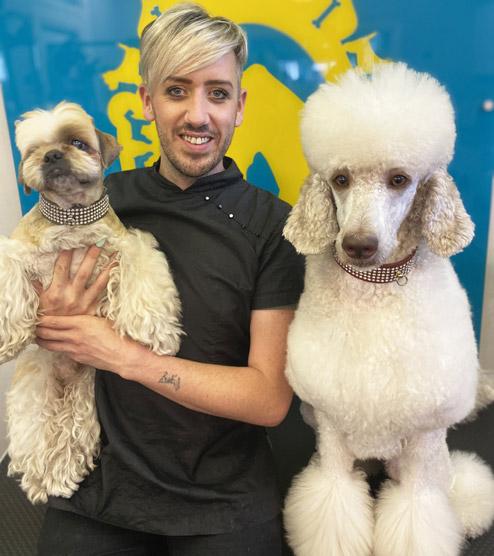
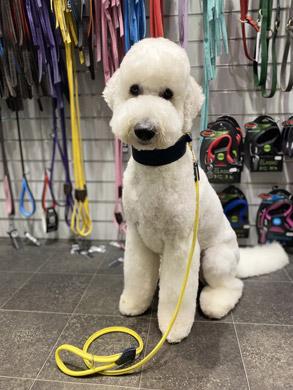
BEN WITH DENNIS & MADI
BARKING UP THE RIGHT TREE
Starting off this issue’s series of features on the joys of pets and their positive impact on mental health and physical wellbeing, Jaq Bayles looks at current trends and the lengths to which dog-lovers will go to keep their pets happy, healthy and looking good. Then, over the following pages, Gscene contributors and readers share their pet pictures and stories
) For centuries – at least 14,000 years, according to general scientific consensus –dogs have been living side-by-side with humans in domestic harmony. Looking at the range of sizes, shapes, temperaments, coats and characteristics, it’s hard to believe all our canine companions today are descended from the grey wolves that, back in the mists of time, ventured ever closer to human hearths, seeking warmth and comfort in return for protection and hunting help. Yet whether Chihuahua or Great Dane, all breeds share that common ancestor and today their popularity is arguably greater than ever, with lockdown seeing a surge in dog ownership and TV schedules perennially littered with shows that laud man’s best friend. It may just be that cats are notoriously more aloof and trickier to persuade to behave, but there’s no doubt that much more airtime is devoted to their sworn enemy – and the trade in dog-related paraphernalia is similarly more highly concentrated. Cats are about as likely to enjoy being dressed up as they are being bathed or herded, but dogs – whether they actively like it or are simply doing their best to please – have increasingly become the target of fashion brands and accessory providers, while related industries such as grooming and walking have seen similar booms.
For all manner of reasons, LGBTQ+ people seem to have a particular affinity with dogs. “There are levels of pet ownership,” says Ben Thorpe, of grooming salon and dog-food producer Bone Idol in Kemptown. “You have a dog owner, then you have a pet parent –someone who treats their dog as a child. There’s nothing they wouldn’t do for their dog.” And he should know. His Shih Tzu, Dennis, sports “a rolled leather harness that cost more than my coat”. Ben, along with friends Jon and Scott, set up Bone Idol in 2016 as a grooming salon, but then the trio realised they were all struggling to find a food that all their dogs loved. So began a search for a food that would make dogs “healthy, happy and fabulous” – the business slogan – which led to the launch of an eponymous grain-free brand. Then, during lockdown, came the formulation of cold-pressed brand Nora Nose Best.
“People are learning more about dog food. With programmes like For the Love of Dogs, they’re interested to learn what they’re feeding their dog. When we were kids my nan’s dog got a bit of dried food and the rest of your dinner.” Half the time the descriptors on modern dog foods sound more appetising than those for many supermarket ready-meals. It’s all part of the anthropomorphisation process – if dogs are perceived as part of the family why shouldn’t they be treated as such? We want to believe we are giving them the best, in terms of nutrition,




“I do worry there will be a lot
hygiene and exercise. And if anyone tells you their dog doesn’t lie on the sofa or sleep on their bed, they’re probably fibbing… Of course, when you have your own chaise longue, maybe you don’t need your owner’s couch. Aries, a five-year-old pug, is the subject of this particular scenario. He’s the pride and joy of Worthing dog boutique owner Paul Derby, and the inspiration for his business model. The shop was originally a fashion store for people, but once Paul got Aries (who shares his name with the boutique) and customers got used to seeing him there every day, requests soon started coming in for dog-related items. Now Aries is all about dogs, with a range of both mainstream and more ‘funky’ dog clothes, leads, collars etc, as well as dog ice cream –top flavour Old Sock – and a range of dog beverages, such as Pawsecco and Champaws, along with a ‘beer’ called Bottom Sniffer. (Before anyone calls the RSPCA they are billed as herbal treats and contain no alcohol.) “I wanted a dog for years,” says Paul, “but finally got one at the age of 30. He’s my life now, he changed my business – I think I
would have closed the shop down if it hadn’t changed.” For many people, Paul included, dogs proved a lifeline during lockdown. “He was a saviour. I don’t know what I’d have done if I hadn’t had him. Mind you, he lost loads of weight going out for all those walks – he’s more used to lying on a chaise longue in the shop. “People are always going to spoil their pets –they’re loveable, loyal, and if you’re lacking that in your life the love from a pet is priceless.” Of course lockdown has brought its own set of issues for dogs and owners alike. If dogs have memories (the greeting received on going out and coming in again five minutes later would suggest they don’t), they will likely regard the past few months as a Golden Age, when owners were constantly at home and walks were plentiful (sometimes too plentiful – I’ve heard of dogs that were running away when they spotted their owners picking up the lead). But that bubble is probably about to burst for many, if it hasn’t already, and there could be fallout.
of dogs that have got used to this life... with a certain amount of people then suddenly those people are they are on their own” Cian
CIAN & RYAN’S FRENCH BULLDOG, PUG & CHIHAUHAU
going back to work and


ARIES DEMONSTRATING THE CHAISE LONGUE CIAN & RYAN
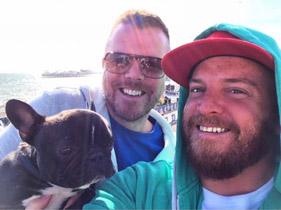
“I do worry there will be a lot of dogs that have got used to this life,” says Cian Howlett, who owns and runs Holler dog boutique in Brighton with partner Ryan. “They will have got used to being in an environment with a certain amount of people then suddenly those people are going back to work and they are on their own.”
This is particularly the case with puppies, which are on a constant learning curve, and there has been an explosion in puppy ownership throughout lockdown. “There will be problems ahead for many,” predicts Cian. People who have had more time on their hands will need to adapt their lives to make sure they create a proper routine for their pets, he says. “You can’t take on a dog and live your old lifestyle. They are a huge commitment.” Cian used to work as a mental health advocate at MindOut, and believes dogs can have a hugely positive impact for people suffering mental health issues, saying they can keep people in a healthy routine in terms of having to get up in the morning to walk their pet and the very fact of having something else to care for is “enriching”. He says: “You become responsible for something other than yourself –that’s really rewarding. A pet is a great addition to someone’s lifestyle if they are in a responsible position.”
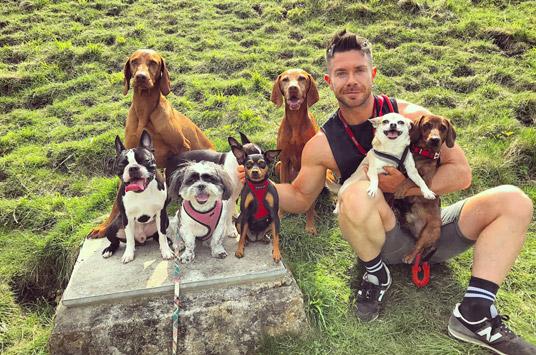
Matt Rood, former Mr Gay Europe, who runs dog walking business Rooddog in Brighton, Hove, Shoreham, Worthing and Lancing, says he would have been lost during lockdown without his Hungarian Vizslas, Hugo (8) and Lulu (10). “They’re my everything.” He too points to the importance of maintaining structure, without which he says it’s easy to let dogs form bad habits. He has shown his dogs up to Crufts level and says the training that goes into such a hobby can be invaluable in teaching a puppy to focus in spite of distractions – it also helps with lead work and getting a dog used to being handled by other people. He has also bred his dogs and walks their offspring, while they, in turn, have helped him train for marathons. “I have taken Hugo on a couple of half marathons and they helped train me for marathons up to 18 miles.” Matt decided on Vizslas after seeing one called Yogi win Best in Show at Crufts in 2010 and falling for its athleticism and energetic nature. “Once you find your breed that’s it,” he says. And, while many people like to rescue dogs, many do choose breeds as specific characteristics should be guaranteed. Currently
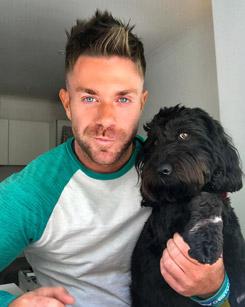
MATT ROOD WITH HUGO & LULU
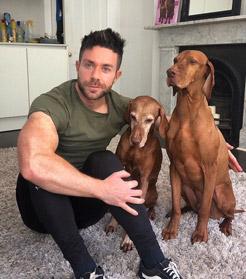
popular are Cockerpoos, Labradoodles and other hypoallergenic breeds, while some of the more breeds are coming back, according to Cian: “Terriers, Poms, Shih Tzus. Mini Dachshunds are very, very popular, as well as Frenchies and Pugs.” Cian and Ryan have a French Bulldog, a Pug and a Chihuahua – “all the popular gay dogs” says Cian. He describes them as having beautiful natures and great personalities but cautions that anyone thinking of getting a flatter-faced breed needs to do some serious research (this applies to all dogs) as they often come with health issues. Brachycephalic dogs are shorter-nosed and flat-faced and breathing problems are quite common as a result of the facial structure.
Aiming to help people who want to better understand dogs or gain some grooming skills, Bone Idol is launching an Academy in Hove providing Level 3 Qualifications in dog grooming and training, as well as workshops and more.
Whether running on the Downs, walking in Stanmer Park or strolling through the North Laine, it seems you’re never more than about six feet from a dog in this part of the world. Is that level of canine concentration common to other areas? “Brighton people just love their dogs,” says Ben, adding that Brighton is an incredibly dog-friendly place, with many restaurants, cafes and shops welcoming them. “It’s so lovely to be in a situation where you can take your dog out for dinner with you, can go into shops and pubs. The community in Brighton – not just the LGBTQ+ community, it’s all the community of dog lovers – they are just so helpful to each other. We have people who come in and buy a toy once a week and it’s like the dogs are getting their pocket money.” While some people see their dogs as child substitutes, it seems some children are less than enamoured of the treatment the family pet gets – especially when it comes to Christmas. Paul says: “People spend more on their dogs than they do on themselves, especially at Christmas. They come in saying ‘I haven’t got enough for my dog’ and their kids are there looking very grumpy.” It’s not all dog-related for Aries and Holler though. Cats do get a look in, and there have been more unusual requests, like the one Holler had for a lizard harness. Possibly the oddest yet, though, is the ongoing hunt for a chicken harness. “It belongs to a friend and it’s really lovely but is always wanting to wander. I am working on it now. You can get a chicken harness but it’s not going to be a mass-market product.”
MORE INFO
D www.boneidol.co.uk D www.rooddog.com F /Aries.Designs.Fashion/ D https://holler.store
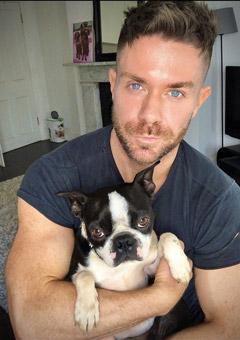
MILDRED & JITS
Our cover star, Jitendra Patel, talks about his intersectional life and why he shares his home with a stuffed Toucan
) Growing up in Preston I had a true sense of community and identity. Everything was laid out for me: who I was, the youngest son of an esteemed Gujarati Patel family; what faith to follow, our ancient Hinduism. Who we associated with and what political party to follow. As the children of Gandhi we had a strong socialist backbone, working with the people for the people. All there in black and white – literally – births, weddings, lots of weddings more of a social thing, and deaths. All of it laid out for you, a path to follow and never, ever deviating. For deviating, read only deviants deviate. I had an open-mouthed hunger for all that would change me, take me away from the safety of family into the danger and excitement that I was seeing on the BBC - Nationwide, August 9, 1979, nudists on Brighton's beach. How scandalous I thought, secretly thrilled. How decadent, Brighton! Having been dressed up in silk sarees and my mother’s gold jewellery by my sisters I was catapulted in front of my Papa and uncles to a Bollywood dance number. I won't treat you, dear reader, to the horrors inflicted on such innocence, but that was the time we lived in. Undeterred and now in discovery, my identity was such as Quentin Crisp portrayed by John Hurt in The Naked Civil Servant – a homosexual. Kinky was another name bandied in my direction. The Gujarati put-downs were worst of all, patriarchal slurs meant to cut. Knowing Indian families are always looking for gossip to feed small village mentalities, I kept my head down. After two attempts at arranged marriages I escaped the cloying curiosities of community to seek freedom and invisibility here in Brighton – an altogether different community, but with the same prerequisites. Funny really. All fables, myths, stories are about running away and trying to find yourself, only to realise you were home all along, just by being yourself. Growing up in Preston, in an Indian Asian community, gave me a strong sense of community, something which has always attracted me to Brighton – that sense of interconnected community, linking in with each other, supporting and platforming each other’s work, ideas and finding common priorities. I’m an intersectional guy – northern, queer, Gujarati, British Asian, Hindi, gay and proud of all these things. My work, particularly my embroidering, brings these strands of my life together in a literal rich tapestry, evoking the skills of Gujarati craftspeople, the colours and vibrancy of Preston’s diverse our LGBTQ+ lives. The Toucan, Mildred, was my Auntiji’s (aunt’s), who had it as a pet for 25 years after rescuing it from a Lancashire circus in the 1980s. When she eventually died we had her stuffed. She was always curious and poked her way into everything. The toucan that is, not my Auntiji. The taxidermy was a hugely expensive option, but also seemed fitting for such an astonishing creature. I would never seek to buy a wild creature from a pet shop or keep any kind of wild creature in a cage, no matter how large. Mildred had lived in a huge aviary in my Auntiji’s garden. Preserving Mildred and keeping her around was very helpful for my Auntiji later in life as she had committed a large part of her own life to looking after it, along with other rescue animals. As she got older and less able to keep animals, Mildred, now silent and still, was her constant companion, and now she shares my home. Mildred had been trained to walk up and down a rope, clacking her beak to a Cha Cha Cha rhythm as part of a Carmen Miranda-themed acrobatic group. As a child I remember she would break into her dance, croaking wildly, sounding more like a demented frog than a bird, then would end her performance with a powerful projection of foul, grey-green sludge poo, ejected at great speed on to the wall behind her aviary. There wasn’t a member of my family that didn’t have a Mildred power-poo story to share.

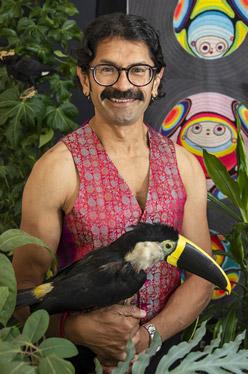
neighbourhoods, the hopeful zest of LGBTQ+ lives and the eye for details that being a fierce queer gives me. Combined, they allow me to produce creative work which is unique, of its moment and fiercely queer. I call this series of embroideries Queer Gene, and they reflect the interconnective DNA of MILDRED & JITS PIC BY NICK FORD
grey-green sludge poo”
I wanted to keep her spirit alive with me every day. I need to take care of Mildred, she needs regular gentle attention to keep her in top form and reminds me every day of the fabulous diversity that life can create. My living pets are my plants, who I dote on, and they’re lucky to enjoy plenty of sunshine, which enables them to flourish and bloom year after year. I’ve really missed Pride this year, along with Trans Pride, Brighton Bear Weekend and all the other comings togethers we have in the city and across the UK. I usually work with LGBTQ+ groups across on the city creating themes, costumes and glamour for Pride Parade entries. It’s seriously hard work, but I love combining political activism with creative performance. I’m feeling a need to be louder than usual, bolder, brighter, to claim us some space, so being on the cover is an opportunity to shout: I’m a queer little British Indian man, older, fabulously wiser, with a needle and thread as my tiller in life, creating colourful interventions in life to celebrate its diversity and, most importantly, I’m still learning but HERE and hear me ROAR.
THE PURRFECT MATCH
Rachel Badham assesses the prevalence of pet ownership in the LGBTQ+ community
) Our community is known for its commitment to the belief that love and acceptance are a human right, regardless of gender identity or sexuality, but it’s less frequently discussed that we’re also a community of pet lovers. According to the website Smart Gay Life, more than 70% of LGBTQ+ people are pet owners compared to 60% of heterosexual, cisgender people. So why do we love our furry friends so much? Reports examining pet ownership in the older population living in San Francisco showed LGBTQ+ people were more likely to be pet owners. This was attributed to the fact that LGBTQ+ people were more likely to live alone or lack family connections due to prejudice. Older queer people who were not able to come out until later in life were also less likely to have a long-term partner.
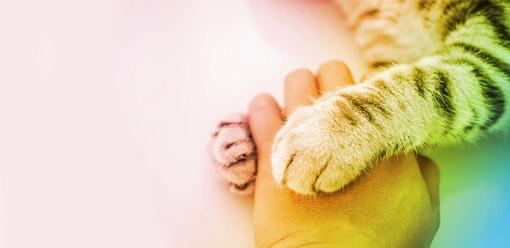
saying that pets may offer a ‘distraction’ from loneliness.
As more LGBTQ+ people struggle with their mental health, it’s likely more will turn to pets for support. A BBC Earth report, exploring why so many people own pets, stated that reproducing has an evolutionary benefit, whereas owning pets will provide you with nothing in return – yet millions still consider them an integral part of the family. I believe that due to the difficult circumstances many LGBTQ+ people are placed in, such as being rejected by their families or not meeting heteronormative expectations to marry and start a nuclear family, they often have a greater understanding of the value of unconditional
love, which demands nothing back. Pets may not be the answer to the prejudice against the LGBTQ+ community, but their endless love and companionship has been a lifeline for many queer people. Pets never judge, regardless of sexual orientation or gender identity, and provide an example of how we should treat each other.
MORE INFO
) It’s Official: Pets Benefit Our Mental Health, Medical News Today. February 19, 2018. Copyright 2020. ) Mental Health Statistics: LGBT People, Mental Health Foundation. Publishing date not stated. Copyright 2020. ) Poll: Gays More Likely To Own Pets, Advocate. December 18, 2007. Copyright 2020. ) Rescue Animals: The Best Pets For LGBT Owners?, Smart Gay Life. Publishing date not stated. Copyright 2015. ) Researchers Say Pets Help LGBT Seniors, Washington Blade. January 22, 2016. Copyright 2020. ) Why Do We Love Our Pets So Much?, BBC Earth. May 29, 2015. Copyright 2020.
LISA & PYRA
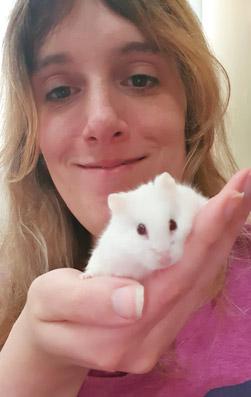
PYRA & MYTHRA, LISA
) Lisa adores her female dwarf hamsters, Pyra and Mythra, which she took on about a year ago having wanted a pet for a while. “When we were kids we had hamsters called Hammy and Sammy and I find them quite calming – just watching what they are doing helps me mentally. They help me feel like I am not alone, and having something to take care of gives me a sense of responsibility. I couldn’t handle a dog but this was something I could do. “I have a play pen to give them a bit of extra space for supervised playtime, and I like to give them things to climb on and different chew toys. I make little puzzles for them out of toilet roll, so they help me creatively too.”
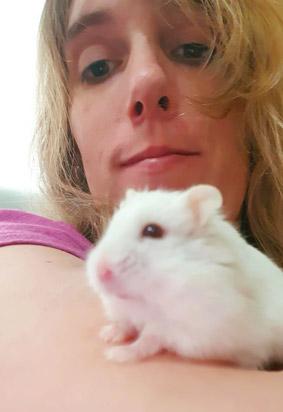
PANTALAIMON, NIKOLAIA
) I adopted Pantalaimon (Pan for short) about nine years ago when in a very abusive relationship. He’d been stray and abused for a long time, then in a shelter, and was extremely anxious and suffering symptoms of PTSD. Having suffered childhood and adolescent abuse myself, I was also suffering (C)PTSD. I’m also autistic, plus I have multiple physical health conditions, and always felt nobody really understood how I felt or what I was going through. My relationship was extremely hard, and made me feel more alone than ever.
The minute I met Pan I felt a connection. He ran into my arms and I knew he was going to be my new sidekick and best friend. He took a while to settle in - he had never lived in a home before. He didn’t know what a sofa or a bed was, he was scared by bins and windows and the oven door opening. He would wake me up at night just to check everything was okay. Sometimes he’d panic for no reason. But soon he learned to play and go for walks and enjoyed cuddling and snuggling on the sofa.
Fast-forward nine years, I’m living alone, and the change has been so incredible. He’s a very confident, smart dog and emotionally very sensitive. If I have a meltdown or a flashback or a nightmare, he knows exactly how to calm me down. If I faint or have a seizure, he’s right there. He’ll bring me my phone or a cushion or sometimes something I’m not expecting (he’s not a trained assistance dog) but it’s usually
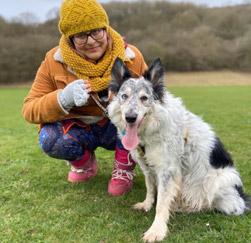
something useful. I’ve used a wheelchair for years (I have HEDS and a brain tumour). I’m practising walking more and he gives me the confidence to try. He’s so patient with me. If I fall he’ll help me up again. He’s so gentle and kind. He is still a very nervous dog - I have to manage his nervousness very carefully as he’s anxious around particular things and has a lot of trauma with particular situations. But he’s doing so well and we manage to work together to have a beautiful relationship. On days where I don’t think I can keep going, he keeps me going. I don’t think I’d be alive without this beautiful soul to keep me smiling. He’s getting old now but still playful and so cuddly and kind. I feel blessed to be a part of his life. I always say to people that I didn’t rescue him, he rescued me.
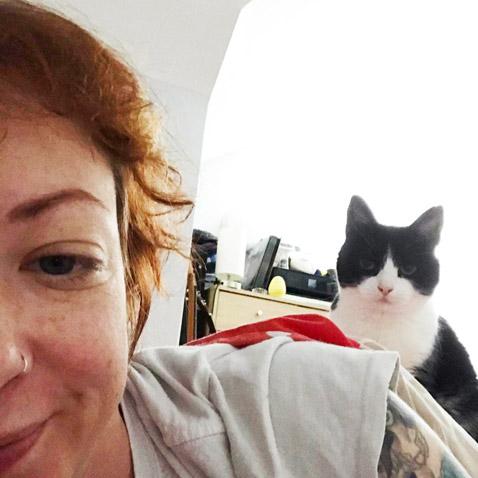
STAN & INDIE, EM
) My name is Emma (I go by Em). My pronouns are she/her and I am a bisexual/pansexual humxn living in Brighton with my partner, cat and doggo. I’m thrilled to write a piece about how important pets are in improving our mental health (well this is certainly the case for me) and what they bring to our overall quality of life. I’ve suffered from depression and anxiety disorder since I was 12, this is born from childhood trauma, which sadly is the case for way too many of us. It has manifested in severe and long-term agoraphobia, obsessive compulsive behaviours, suicidal thoughts. When I’m at my worst, I lose all concept of reality, including forgetting how to do the simplest of things like using my phone to make a call. I also begin to stumble over my words, unable to make a full sentence. This makes communicating very difficult and overwhelming for me, so I begin to shut down and avoid speaking on the phone or in person. This is a shock for a lot of people as when I’m at my ‘best’ I present as a very upbeat, social and warm person. One of the best therapies for me has come from owning pets. Please let me introduce my fur babies, Indie and Stanley. Ten years ago, a tiny cat named Indie came into my life. We found out that she was given to us way too young after we were informed by the vet that she was only four weeks old and had barely started weaning. This resulted in myself and my partner teaching her how to be a cat. This wasn’t something we’d prepared for so, after a lot
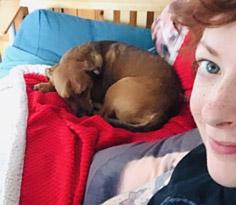
of research combined with trial and error, we had a cat who behaved more like a dog than a cat! She is such a character and has been a beam of light throughout my darkest times, never leaving my side when I need her (or when she wants feeding of course). She’s very tiny and still looks like a kitten but acts like a chilled-out lady of leisure. STAN & EM
Most recently, we rescued a pup named Stanley. I couldn’t have predicted the effect bringing a dog into our life would have. I was in the midst of a breakdown when Stan arrived and hadn’t left the house in five months. Here was this pup who had been through an awful lot in the first six months of his life. He was scared and alone and needed me as much as I did him. Since he has arrived, he has taught me patience, focus and acceptance. He makes me laugh when all I want to do is cry, helps me leave the house when agoraphobia begins to rear its head and watching him overcome what he’s been through each day inspires me to do the same.
All we need to do now is convince the cat that he is worthy of her time (she is a total diva and we love her for it).
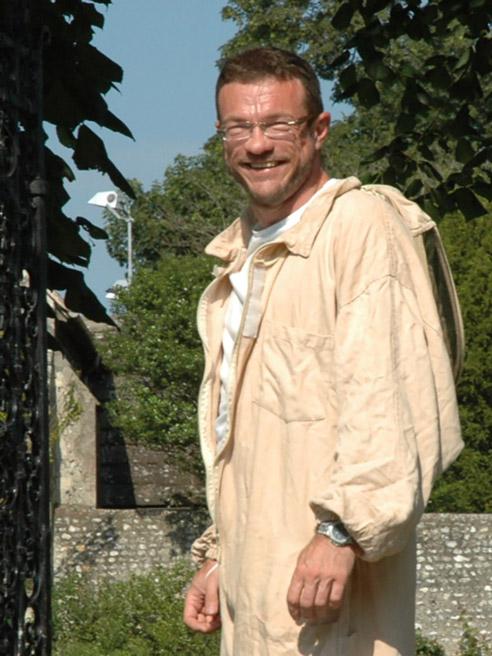
From egg to bee
) Picture this. You’re about to take part in the biggest heist of the year. You’re tooled up and ready for action. There will be guards and you'll have to sow confusion in their ranks to fool them. Perhaps smoke will be best – they won't see you and they won't smell you, at least, not until it’s too late. You’re suited up –it’s not wise to go in unprotected. Do you trust your accomplices? It’s best to have more than one person on this job, that gold is going to be heavy to cart away amid the chaos. You have your exit strategy planned, there might be a chase once the theft is noticed. What are you? You are a beekeeper. Robbing their surplus honey is the reward you get for tending to them, keeping them free from disease and safe from predators and parasites. A worker honeybee (they’re all female) will progress through a series of tasks and ‘professions’ in her short life. They progress through several roles: nursery worker, cleaner, shelf/comb stacker, quartermaster, guard bee, honeycomb architect and builder and, finally the ultimate prize, to be a forager, allowed out into a very dangerous but enthralling world, dodging insect-eating birds, spiders, wasps and hornets, finding sources of food for their sisters, and coming home to dance about it. A good book that imagines life inside a honey bee colony is The Bees by Laline Paull. It does anthropomorphise the bee society, but it does help with understanding them. Insects have such an alien way of living compared to us mammals. Every bee starts as an egg. The egg looks like a grain of rice but is a tenth of that size. With careful tending and feeding, the egg becomes a larva. That larva is again nurtured until it’s capped and undergoes a metamorphosis. After the transformation a new bee will emerge, using its mandibles to eat through the wax seal, much like a chick from a bird egg. When we inspect our colonies, we often see little heads poking out of the comb as they nibble their way out. I always proclaim “It's a girl!”, as 90% of them are workers. Queens are workers who have been
THE GOLD AT THE END OF THE RAINBOW
David Fray on the magic of bees
fed extra royal jelly at the larval stage.
Boys, boys, boys
What do the male honeybees do? (They’re called drones due to their louder noise when their wings beat.) Well, they serve two purposes: to fertilise a queen and to keep the workers happy, and that's it.

Honeybee colonies have been shown to have a better temperament when drones are present. I’m not sure if scientists know why yet. Perhaps when drones are around they emit a pheromone that pleases the workers, or perhaps the workers are aware that if a queen fails or dies there are males around to breed with a ‘princess’ leading to a new laying queen. The fate of the colony rests on having a constant supply of new bees. The mating isn’t as glorious as it sounds. Drones from miles around will gather in congregation zones, such as above a landmark tree. The queen will sniff them out and fly among them, mating with up to 20-30 drones. The drones have much larger eyes to spot the maiden queens, and they mate with them in the air. The genital apparatus of the drones contains an explosive bladder of gas that ensures ‘purchase’ with the queen. This explosion kills the drone outright, and he falls to the ground, hopefully with an eternal insect smile on his face.
The unlucky (or perhaps lucky) drones that don’t mate can live for months, dropping into many hives (not just their birth hive), and getting fed and cleaned by the workers. Then, tragically, in the autumn the workers decide they’ve had enough of the drones and refuse them entry, leaving them starving and dying outside each colony. We call this the ‘dearth’. The reason for this mass cull is that drones consume too many resources over winter. It’s more cost effective to the survival of the colony to create new drones in the spring when resources start to increase.
Questions...
As a beekeeper, there are some commonly asked questions that I hear. How long does a bee live? A worker can live as little as six weeks in summer, and a few months outside the busy season. A queen can live up to five years. The drones can live from March to October, as long as they don’t mate. Does getting stung hurt? Yes, it hurts! And getting stung several times at once hurts even more. I carry antihistamines and an Epipen in my toolbox in case I become allergic. How much honey do you harvest? It varies from year to year; I’m not competitive about it as some keepers can be. I don’t measure it. I’m not too greedy, as they work very hard for their supplies. From a strong colony, I guess I would take 10-20kg per hive.
How much time does beekeeping take?
During peak season we should visit our colonies once every eight to 10 days. In winter I would check on them about once a month, or once a fortnight in early spring. How much does it cost to start? To start up, you can buy a cheap hive and suit and tools from £150. There is usually always second-hand equipment for sale from keepers who have retired. You can buy bees, or get them free from swarms from your local association.

MORE INFO
) Our Brighton and Lewes Beekeepers Association is friendly, I know a few LGBTQ+ beekeepers. If you don’t have access to a garden or land, they have sites across Sussex where you can keep your bees. D www.brightonlewesbeekeepers
BLOSSOM & RUPERT, NEIL & AFFY
) We’ve got two rescue moggies, Blossom (19) and Rupert (four). We got Blossom when she was eight, along with her sister, who died a couple of years ago. Blossom was not quite right for a while after – she’s very clingy and loves her daddy! I’ve had cats from as early as I can remember. I love their independence. You are theirs, they are not yours. Blossom is constantly judging, like an elderly relative. She’s really
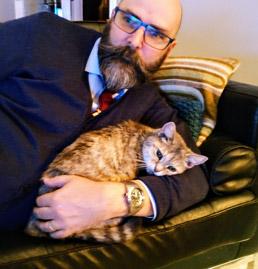
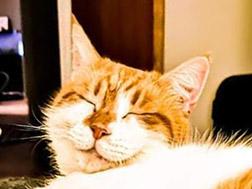
determined. If you don’t allow her to do something she will have a hissy fit and tell you off. It definitely feels like cats are equals. Rupert is the first boy cat we have had. He’s so soppy, while the females are more intelligent and independent. Our working days are devoted to them – I’m glad I don’t have to commute any more. It’s quite a luxury for us to be able to spend all day with them. We do govern our world around them - we won’t go on holiday if we think there’s anything wrong, we have house sitters rather than sending them anywhere. We don’t dress them up. We once got them some cravats but when we put them on they slumped low to the ground and tried to walk backwards out of them. They eat better than us - Blossom has a raw diet of chicken and line-caught fish. They are the family that’s with you through thick and thin.
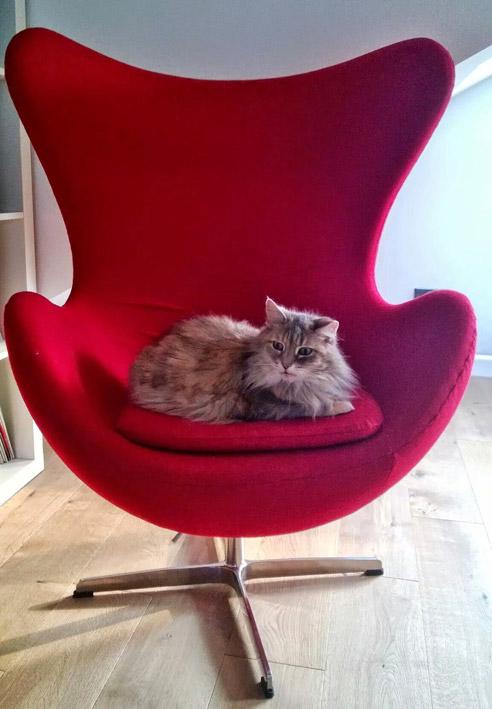
MADGE, HUBBELL & ARNIE, WILDBLOOD & QUEENIE
) Since we first met we’ve always had some feline action in our life and our current rulers Madge and Hubbell are heading towards their 13th year with us. Defiantly in charge of the roost, they keep us in check and fill each day with affection - depending on the supply of fish fingers and custard obviously.

Arnie, the latest addition to our household, is a two-year-old rescued mutley from Portugal who joined us two weeks before lockdown. He is the dog we never knew we needed, fulfilling the cliché of becoming the rescue dog that rescued us. It helps that he looks exactly like a cartoon of the ideal dog Queenie would have drawn if asked. And after much bribery the three of them all get along, especially when Madge is in charge of the aforementioned fish fingers, and although there is definitely less room on the sofa for us humans since he arrived, Arnie has filled this year of the unknown with the certainty of love. Unconditional, overexcited, love.
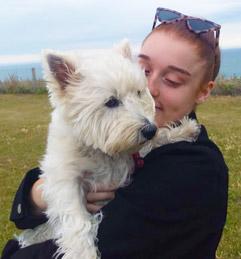
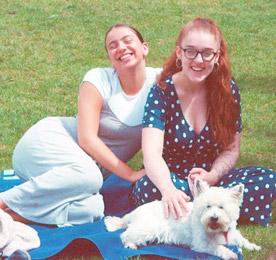
BOBBY & PHOEBE, GENA & SOPH
) Bobby (short for Bob The Drag Queen) is our lockdown baby. He joined us in a very difficult time for everybody, and has brought so much joy to us ever since. At just four months now, he doesn’t fail to entertain. His favourite naughty pastimes include: climbing our clothes-drying rack like a climbing frame and pulling all of the clothes off, sleeping in the sink, sitting on top of our moving fan, taking down our fairy lights and jumping in our fridge as loves everyone, especially Rachel and her brother. She grew up with them and is 17 now. I can’t remember what life was like without her. She is so companionable and affectionate. Lily loves to potter in the garden with me when I’m watering the plants or curl up on your lap in the winter, and she also loves playing hide and seek, which makes me laugh. She is always happy to see us (even if it is because she is hopeful for something to eat!) and has made us happy too.' soon as the door opens and refusing to get out. He is the most affectionate little man and we have loved spending our lockdown spoiling him and getting to know his cheeky personality. Your mums love you Bob-cat. Phoebe is the most gorgeous dog with the biggest personality. She was the newest addition to my parents’ house about a year before I left home – their replacement baby. She never fails to put a smile on anyone’s face and she loves nothing more than a belly rub or a cuddle... or treats. She normally wears a pink tartan bow-tie, apart from Pride
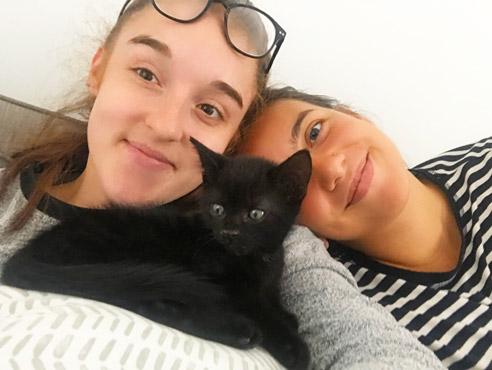
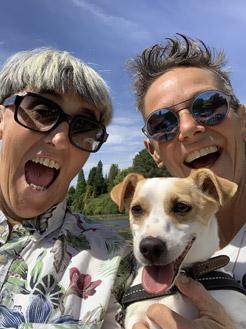
LILY, HILARY
) Lily is completely one of the family; she when she accessories with rainbow ribbons.
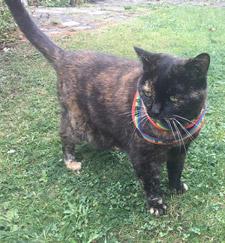
THE MANE EVENT
Mark Richardson, fundraising and communications manager at FareShare Sussex, has a pet that would be the envy of many
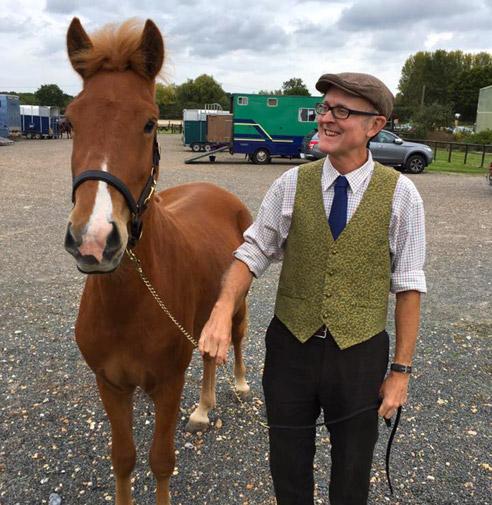
at my age.”

Mark explains that horses are prey creatures, so their first instinct on sensing danger is to run away. “You have to understand that because it really helps in training.” When Jonsi was four Mark was able to saddle him up and sit on him. After a further six months they started going for riding lessons and jumping. “He really, really likes jumping,” says Mark. “I’m not sure I like it as much as him. Mainly we go out for long rides. Every morning I come up to Rottingdean and we go for rides around the Downs. It’s a wonderful way to connect with nature and build this incredible bond. I do it in all weathers although it’s not always such fun when it’s raining and horrible. “Jonsi’s amazing. He likes to use his brain so I started to do horse agility with him. It’s similar to dog agility – you get them used to various objects so they’re not startled when you’re out on the road and a car goes by or something. You don’t want them to run, so it’s a way of getting them used to the fact that humans do really weird things. We had to develop a bond so he knows whatever I do would not be dangerous.” As with dog agility there’s a competitive element to horse agility, although this isn’t the most important aspect for Mark – rather it’s the experience of going somewhere new and trying different things for Jonsi. To that end they take part in TREC contests, which test the skills of horse and rider in planning and executing a long-distance ride in unfamiliar country. However, Mark and Jonsi only undertake these two or three times a year as the cost of hiring transport is prohibitive. While some pet owners like to treat their animals by buying them clothes and toys, Mark’s approach is to spoil Jonsi by keeping him as natural as possible. “I don’t use a bit because I don’t like putting things in his mouth - he has learned to go left and right and change speed to my voice. He doesn’t wear shoes because they don’t have them when they’re living in the wild. You can get rainbow lead ropes and saddle bags, as well as all types of coats, but his coat is really thick anyway. The horse I had before this was a cob and she looked beautiful with her mane plaited, but he looks really good rough.” Keeping a horse might sound like hard work to many – not least the all-weather nature of the task – but clearly the pay-off is more than worth it for Mark.
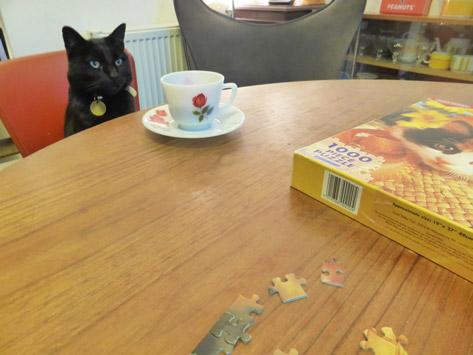
TILLY, CASSIE
) This is my cat, Tilly, who I’ve had since
DAVE, MICHELE & FRANCES
) We got Dave as a kitten 12 years ago. We named him after League Of Gentlemen’s Papa Lazarou’s catchphrase ‘You’re my wife now Dave’ and not after our Dads as they like to think. He’s a very handsome, affectionate boy, always up for a game of hide & seek or a good wrestle with teddy and absolutely the boss of the house. He likes to think he’s helping me out with Gscene design duties when he makes himself comfortable on my keyboard and he’ll stand with his claws poised over my vinyl record collection with a ‘dare me’ look when he fancies a snack or thinks we should be paying him more attention. Dave hangs out with his best friends Elfie and Basil from next door. Basil is the notorious Cats Of Hanover Knicker Nicker who steals pants from neighbours’ washing lines as ‘gifts’ for his owner. Local and national TV and newspaper coverage suggested Dave was his accomplice and branded them as ‘Purr-verts’. Three years ago Dave went missing for over four months and we were totally bereft. We put ‘Dave Missing’ posters up everywhere and alerted all the local lost cat websites and Facebook pages. Every day was spent
tramping round the streets looking for him and following up FB messages and phone calls reporting sightings which turned out to be false alarms. Frances even managed to persuade one or two nonplussed cats into the cat basket and brought them home for me to double check they weren’t Dave. We got to know the neighbours, their gardens and our neighbourhood VERY well. Not only were our hearts broken but we also suffered calamitous accidents and high drama while we searching: a broken thumb, a badly sprained ankle, being physical attacked by a troubled teen, and having to take a dead cat that someone found and thought might be Dave to the vet to be identified. Just when we had almost given up hope of ever finding him, our family was reunited after someone reported a stray cat who had been living at the bottom of their nan’s garden for four months over a mile away by the cemetery. It turned out to be our darling. We were totally overjoyed to have the love of our life back home though I’m not sure he thought the 11pm curfew from then on was entirely fair… she was a kitten and I was 24 years old. When my partner at the time presented her to me as a surprise, I wasn’t overjoyed as I always thought I’d be when I finally got my own pet. Instead I was terrified that I was too young for the responsibility and this led to many a sleepless night. It turned out that having a cat at a relatively young age was incredibly grounding and helped to give me structure and purpose as I navigated the challenges of new jobs, numerous house moves and breakups of my
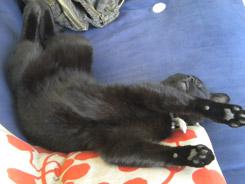
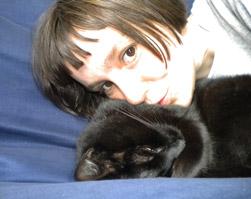
HELPING WITH GSCENE
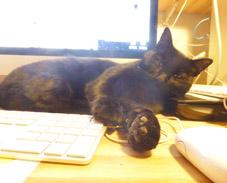
20s.
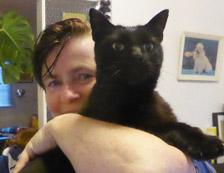
BACK HOME AFTER A 4 MONTH MINI-BREAK TILLY

TILLY
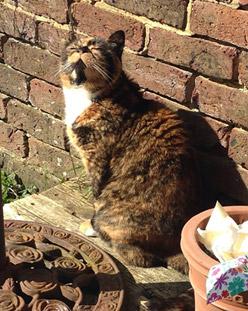
Now she is in her later years, her slower pace of life reflects the more settled and content feelings I’ve had in my 30s. She’s been particularly amusing during lockdown, bringing me gifts of mice and birds when I’m on work Zoom calls and developing an array of different meows, ranging from the desperate “where is my food” straight after she has eaten to the elongated, vibrating meow as she runs through the door after I’ve forgotten she was out. Having her around during this time has meant that I’ve never felt lonely – in fact, this has been the case for the past 14 years she’s been with me and this makes me very grateful to have her.
CHARLIE, GRAY
) Charlie came to us as a rescue puppy at about 10 weeks after a friend rescued him from a difficult domestic situation. I was working with LGBT Switchboard at the time when my friend gave me a bell to say they were outside and had a surprise... and there was Charlie! My friend was unsure what would happen to him, as there was a long wait for dog homes and their flat wasn’t big enough. As soon as my partner saw the picture she was like ‘we have to take him!’ and ever since he’s been a part of the family. We’ve also had another rescue join us from Romania, called Luna. They spend most of
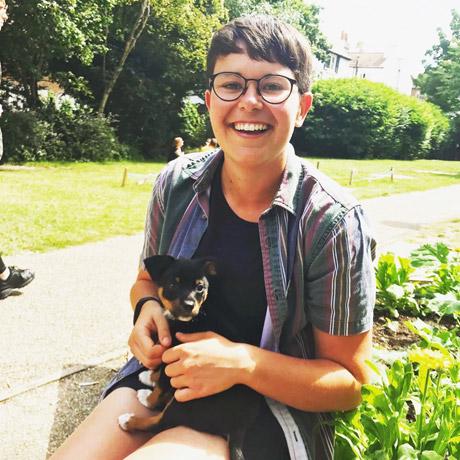
their time chasing each other round, bickering over a squeaky ice cream toy. Best thing about him is his cheeky character and how he has to constantly be in contact with us for a cuddle. His worst habit is his toxic farts and how he really seems to enjoy digging up freshly planted flowers.
Lockdown was so isolating and he gave us a reason to get up in the morning and go out for a walk some days when it was tough - but he’s also company that would make us laugh! We’ve both said it would have been a lot harder without him, we’re very lucky.
SEB THE MAN MAGNET WITH RICHARD & NEIL
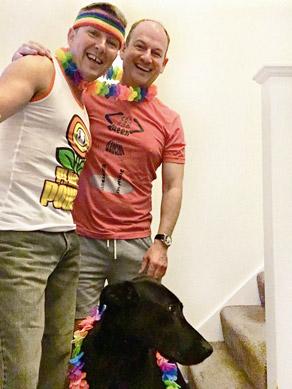
SEB, RICHARD & NEIL
) I thought I’d share this pic of me, my partner Neil and our lovely four-year-old Greek rescue hound, Seb. He’s our constant companion. Never judges, never argues, is always on hand for a much-needed hug and is a bit of a man-magnet when we’re out for walks. Cough. They’re not interested in us, but they are in Seb! I’ve been working from home since February and he’s been the best company over lockdown. Life’s so much better with a dog!
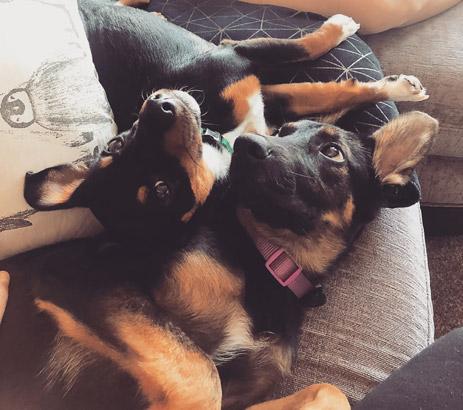

MYLO, MARIE
) I'm a dog lover and Mylo brightens up almost every day. He's a very bold character and usually can be heard before seen.
I love music and have always written it when time allowed and I've been doing a lot more of it lately. Mylo is rather highly strung, he is known down the salon as a drama queen, so I thought I’d try writing some ambient-style music to see if he liked it. According to various articles, the common thread of animal music is that the bpm is usually 80. So I've had great fun messing around, learning how to record sounds like the sea and rain and it's been great. Mylo comes to visit me by pawing on the door of my little studio when the music is on – he usually has a doze unless a pesky seagull must be told whose house this is. Even playing the rain and sea at night has helped reduce some of the random single barks that are always such a treat. As someone captioned this picture, because he's worth it!
BETTY & FIONA, GRAHAM
) Betty and Fiona – my little furry sidekicks. I rescued these gorgeous girls about seven years ago from a cat shelter in Portslade. I was told that Betty was found waddling around Western Road, heavily pregnant; Fi rescued looking lost and worse for wear.
“She will never be a lapcat!”, the cat lady panted as she tried to coax a timid Betty from the corner of a room she shared with a bossy Tom. No wonder she’d been there for months… She was seldom ever seen! But how wrong the cat lady was!
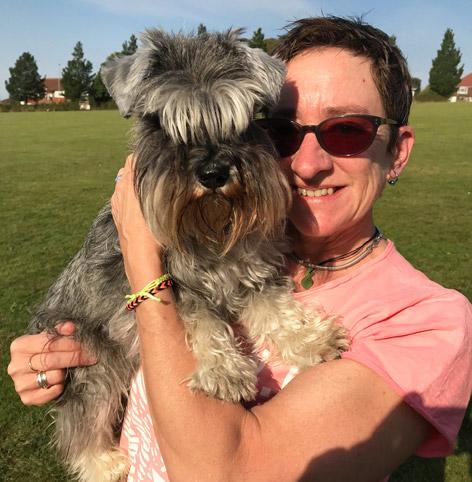
Nowadays, there’s nothing more comforting than to have Betty’s pins clinging to my exposed leg for dear life. Princess Fi, as she is known, prefers what was at one time, probably one-hour max, my foot stool… As girl cats they’re both fiercely independent, brilliant alarm clocks, can often drive me up the wall/around the bend, but I love them and their company very much!

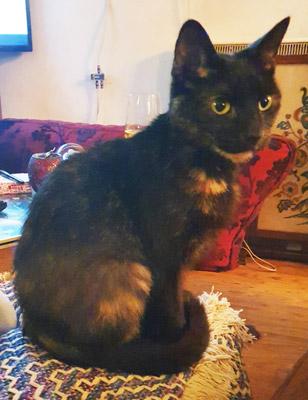
PRINCESS FI
SYDNEY, JAQ
) Tropical fish, stick insects, frogs, an axolotl, a baby alligator, newts, gerbils, guinea pigs, rabbits, cats, dogs. I think that’s the full roster of creatures that graced my childhood home at one time or another and after setting out on my own I continued to have cats, but as soon as I was in a position to get a dog I was on the case. Having grown up with an Alsatian I really thought it would be a big dog that stole my heart, but the day I set eyes on a Miniature Schnauzer for the first time, I knew that would be the dog for me. That first meeting was in a shop called R. Soles in the North Laine back in the early 1990s and the dog was called Roly. I did my research and discovered that not only were Minis the most stunning-looking dogs, they didn’t moult and their temperament was gentle, relaxed and funny. They were equally happy to yomp for miles through the countryside or just take a short spin around the block if you weren’t up for a trek – in short, they were the perfect utility dog. And so Scooter came into my life. She was followed by Truffle, who was joined a couple of years later by Macy. And when we lost Macy, Sydney came to keep Truffle company in his final years (he was 16 when we had to say goodbye).
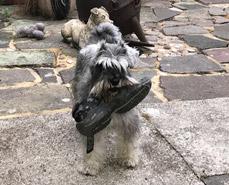
SYDNEY Sydney, or Squid, or Squiddles, as she is more often called, is now five and unashamedly our child substitute. She is funny, naughty, loving and has the most extraordinary vocabulary, which includes an astonishing sequence of trills and squeals that constitute what is known as “the greeting”, reserved for the chosen few. She is also a massive thief of socks, underwear and especially shoes, as can .be seen from the pictures.
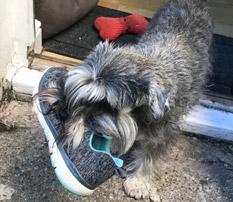
I couldn’t imagine life without a dog now and Minis are definitely my breed, although I am a huge fan of all dogs. When I went through a period of major depression it was that canine companionship that kept me afloat, and the unconditional love they give that lifted me when I didn’t feel liftable.
The power of pet ownership is quite magical – they give so much and their ability to make you feel special when that seems an impossibility is testament to their therapeutic abilities. That aside, my dogs have helped me discover places I would probably never have gone and meet people I would probably never have met. They truly have enriched my life in so many ways.
) A Tale Of Two Kitties... or more ) Kevin always put a smile in our faces. He has been amazing support for me and such a great companion to have. When I’m working and have passed his lunchtime walk, he will come to tell me. He can also be grumpy and sassy hehe. And just to clarify any rumours, Kevin is gay. When we come home, he still looks for James.
precisely Four Moggies & A Funeral. After 40 years in Brighton, Gary and I moved, lock, stock and Mau, our black and white eight-year-old moggie, to Valencia four years ago. We hated the idea of putting her in an aircraft hold, so bought a car, drove two hours to Portsmouth, 24 hours in a pet friendly ferry cabin, drove another five hours to Valencia, and then sold the car.
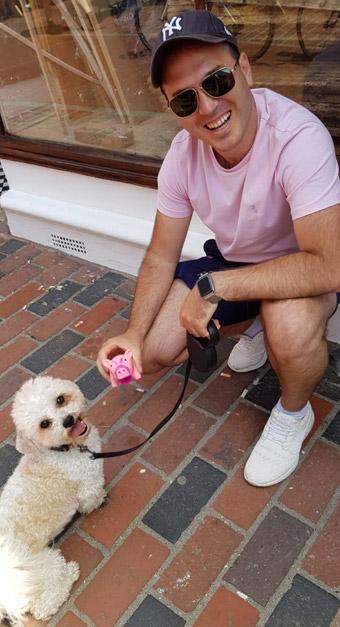
Within three months a friend found an eight-week-old fluffy kitten on the street, so we took her in and called her Bea.
Then last year we heard a loud crying coming from a wheel arch across the
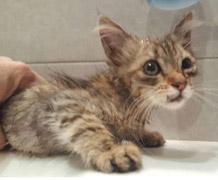
plaza, and took two hours to coax a jet black eight-week-old kitten out with some jamon. A little bob tail meant we called him Bob. He grew big and strong, but at ten months old he died, and we don’t know why. Since the Universe proved adapt at providing us with our feline family, we waited, and sure enough, in the middle of lockdown we heard that a 10-week-old ginger kitten needed rehoming, and we’re now bringing Max up. They all bring joy, interest, and love to our lives, and don’t need to be
KEVIN, BESI
walked.
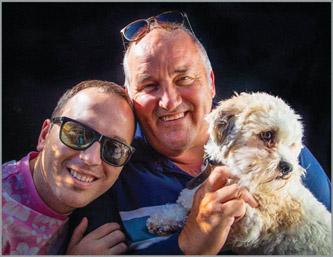
KEVIN & JAMES

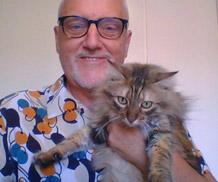
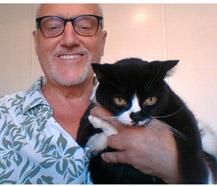
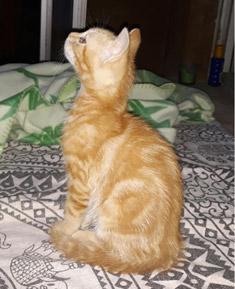
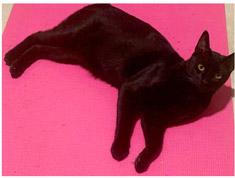
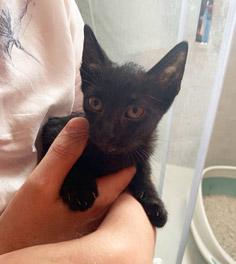
CHRIS & HIS CLOWDER OF CATS
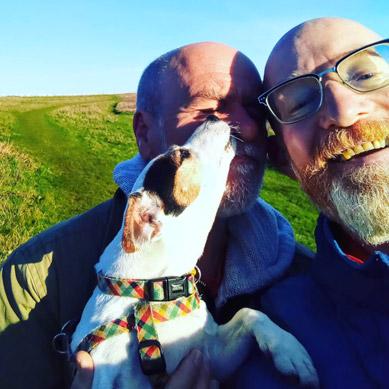
PIPPIN, RALPH & MARTIN
) This is me with my husband Martin and our dog Pippin. We met Pip through borrowmydoggy.com six years ago, and Pip has lived with us now for about five years. We’re co-parenting with her owner, which is handy if we’re going away to dog un-friendly places. She’s a lot calmer now than when we first met - she would kick off at any dog regardless of size and would shout at children across the street, but now she’s a chilled lady (mostly). I love her dearly, we both do, even if she rarely goes through the night without having to have a sniff around the garden in the small hours to save us from real or imagined dangers.
ROCKY, GARY
) This is Rocky, aged nine in lockdown summer 2020. Rocky is everything to love in a being - authentic, independent, playful, usually ready for a kiss and always up for a walk! I love my dog.
ANNIE & TOMMY, SUE & VIX
) Introducing Tommy, a Patterdale Terrier aged 14, and Annie aged 16 plus, a Parson Russell Terrier. They are both rescues from a charity which rescues smaller dogs from council pounds all over the UK, Tommy from Wigan and Annie from Bristol. It has to be said, they are not really fond of each other... Annie thinks Tommy is a cat pooeating, escape artist who doesn’t take his responsibilities seriously and eats like a feral dog. Tommy thinks Annie is too bossy and needs to chill out, especially as she has arthritis. Both have bad breath. But they are our ‘dear little friends’ and ‘the kids’ despite having the human equivalent ages of great grandparents in their twilight years. We adore them both obviously, and they continue to give us immense joy and substantial vet bills.
SUE & ANNIE
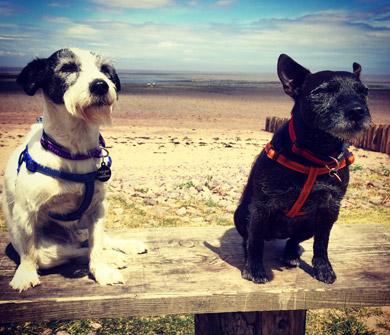
VIX & TOMMY
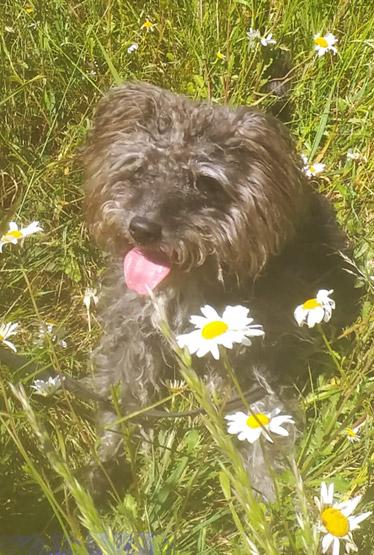
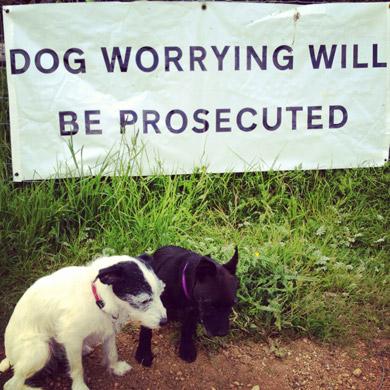
ANNIE & TOMMY

MISO, ALEX & DOM
) This is us with Miso, our one-year-old lilac British shorthair lockdown buddy! She has a harness and we take her to the beach and she even came on a staycation with us to the Surrey Hills. She even has her own Insta account @misosoft and she is a little nutter - she spends half her life on her back in the most inconvenient spots, eg the middle of the kitchen floor :)
MISO
PUFY, LISA
) My beautiful three-legged bestie Pufy was a street dog in Romania before she came into my life. She is covered in scars, I can’t imagine what she’s been through. She’s the most loving, gentle little being. I could go on and on about how wonderful she is! Everyone loves Pufy, it warms my heart every time I see people smile when they spot her. Pufy has helped me through some incredibly difficult times, I honestly don’t know what I’d have done without her by my side. It’s definitely more a case of her rescuing me than the other way round.
PUFY

LOKI & FINN
LOKI, FINN
) Finn the human and Loki the dog. Loki was found on the street as a young puppy. At maybe only eight weeks old she had a tough start to life, all alone and already scarred by street living – literally as she had a strange burn-like scar down the length of her back. As a Romanian stray, she found herself scooped up by local authorities who handed her over to a European dog rescue network. Not long after she found herself travelling overland to the UK and arrived at a rescue centre in north London.
When my then partner and I first saw her, she came bounding out of the doghouse into the play area to meet us. We were both surprised by how short her legs were. She looked like a cross between a German Shepherd and a sausage dog or Corgi. Bar the short legs, this look is apparently quite common among Romanian street dogs. We weren’t sure at first: would she be able, with her challenged stature, to handle the long treks my partner had planned for her? After some reassuring chats with the rescue centre we agreed to adopt
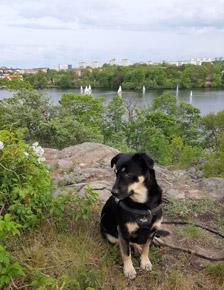
Loki and give her a new life in Brighton. Becoming a dog dad, after only ever having had cats before, was a learning curve. I really enjoyed teaching Loki how to play, but I didn’t enjoy trying to teach her how to walk. She wouldn’t walk, only sit or stand in the middle of the pavement for ages. Looking back on it now I can only imagine what she might have been feeling, having been thrust into the care of strange humans in a strange land. Odd as it may seem, I could see a lot of myself in Loki. A lost pup who needed a home and family.
LOKI & FINN
LOKI & FINN

The relationship with my partner changed and we separated. Years later we’re friends again and I went to visit them both in their new home in Sweden this autumn. What amazes me is not only that Loki remembers me, but that she is visibly excited and happy to see me. She almost knocked me to the ground when I arrived at the station. Even the mention of my name makes her ears prick up. The bond we have is unlike one I’ve ever experienced with an animal. I feel very honoured to be part of her pack.
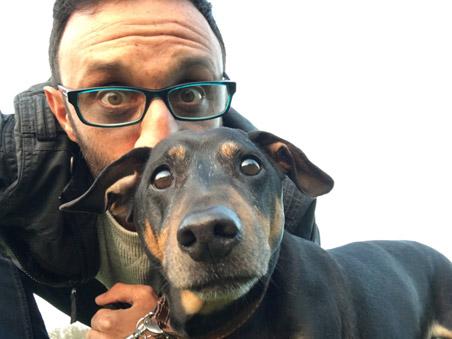
JAZZ, MARIA
) This is Jazz, usually sociable,
LOUIE, NICK
) The first time Louie and I met, I was washing my car outside my parents’ house, and this little pocket rocket came bounding out of my neighbour’s house to come and say ‘hello’! He was only a puppy, a Dachshund-Jack Russell cross (affectionately known as a ‘butch sausage’), complete with obligatory Doberman comedy eyebrows! Puppies being puppies, his mum, Jas, wasn’t aware of him bolting out of the house, and he unfortunately overshot and ended up gunning for the road… I have never had such a mix of elation and sudden horror in such quick succession as I had to step out and grab him and stop the car that was unwittingly trundling along at that precise moment. Both the driver and I let out a sigh of relief. I am a firm believer that our encounter and me being necessarily forceful with him at that moment forged our relationship into a firm and loving one. I absolutely loved Louie, and he absolutely loved me. I’d never experienced such unconditional love from an animal. He was a little scallywag for his mum, and we always laughed at how well behaved he was when he was with me. Over the years I would take him out for walks, rides in the car and he would sit by the car if he wanted to go for an adventure! Whenever I took him up to the Fiveways I got into the habit of stopping by each road even when it was quiet, and in the end I didn’t need to say anything, he’d just sit, wait and look at me for the next instruction. When I took on the studio, he would come to work with me from time to time. He loved the extra attention and the company. It was like I was his surrogate dad. It was such a lovely arrangement; his mum knew he was in safe hands with me, and due to my work situation, couldn’t commit to having a dog of my own. I would say ‘speak!’ and he’d let his mum know we were home! Such fond memories of such a beautiful boy. He had a long life but inevitable tragedy struck a few years ago. I got the dreaded call from Jasmine telling me that Louie got spooked, bolted out of the house and got hit by a car, in the very spot where I grabbed him out of the road all those years ago. I was heartbroken. It was a hit and run, and Louie had to be put down at the vets as his injuries were too severe. The way I have tried to deal with the loss of Louie is that if I didn’t pull him out of the road all those years ago, I would never have known how much a dog can have such a positive impact on someone. He was taken too soon, but had a long and happy life. I will always have a special place in my heart for my trusty sidekick.
sometimes moody, always gorgeous and always, always there. She would entice you in rolling on her back, such a beautiful furry tummy to stroke, but if you stroked her for too
JAZZ
LYMPIE, ZOE
) Lympie lives in Brighton with her mum, Zoe. When she was about three years old, Lympie came to live with Zoe. Before this time, Lympie was known to be homeless, living in a shed, and then she was knocked down by a car. She was taken to the vet as she had broken one back leg; the other back leg sadly needed to be amputated. A friend who is a vet asked Zoe to look after the cat (who was called Olive at the time). short a time, too long, too hard, too soft, she’d soon let you know (better wear gloves next time ha ha). And now after 21 years of companionship and just joy basically, she’s not here. Our home has something missing, not just furry cushions, chairs... now after nearly three years we still miss her like crazy, every single day. Another
21 years would have been just fine.
JAZZ

After a while of fostering Olive, Zoe realised she couldn’t let her go and decided on adoption. One night when sipping Margaritas with some friends, Zoe decided to change Olive’s name to Olympia; on hearing this, Zoe's drinking companions laughed out loud and exclaimed ”Look it’s Lympie!”. Hence Olive became Lympie. Lympie now has two and a half working legs. She is loved by everyone who meets her and during lockdown she has hopped around happily. She helps Zoe, who loves Lympie’s big blue eyes, stay happy and we’re always amazed at how quickly she can hop up and down the stairs. She’s quicker than Zoe and probably could beat Usain Bolt in a sprint to her kibble.
LYMPIE & ZOE
LYMPIE
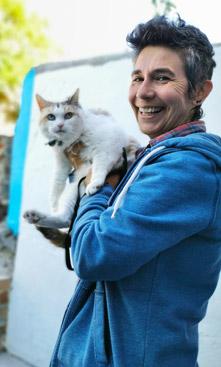
GUIDING LIGHT
Richard Jeneway’s guide dog, Clover, not only keeps him safe when he’s out and about, she’s his companion and a great leveller when it comes to interacting with new people of all ages
) Some of my earliest memories are as a fouryear-old child growing up in the New Forest. Having much older siblings, the family dog became my best friend – boy and his Corgi heading off along country lanes, exploring and having adventures.
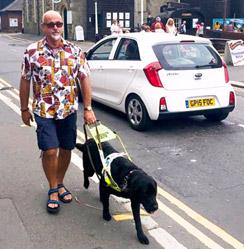
As a natural progression when I left home, I was determined to have a dog of my own. Aged 21 on holiday in Cornwall, we happened across a farm where there was a sign advertising ‘puppies for sale’. My heart instantly melted when I met a little broken-coated terrier, which I purchased for the princely sum of £10. Esther, as I named her, remained my companion for 15 years. Other much-loved terriers followed and in 1998 a rescue dog called Sonny came into our lives and went on to become an extraordinary companion to me as my partner died the following year. That little dog became my reason to continue, grounding me into reality when I could have gone off the rails. Even with my sight diminishing he stood by me, learning the tube and bus routes to home in London, becoming my helping dog emotionally and physically. We became inseparable until he died in 2005. From losing my sight in 2006 and using a white cane, to getting my first guide dog in 2011, I didn’t realise how much independence I had lost. Sabin helped to break down social barriers and my own self-imposed stigma, giving me the confidence to become a volunteer.
Clover, who is my guide dog now, took over responsibility for me in 2016. I’ve no useful vision so rely totally on Clover keeping us both safe. She draws people of all ages to her with offers to help or just wanting to meet a guide dog who loves the attention. Clover and I have attended events representing guide dogs, including pre-school where small children ask awkward questions about my eyes and, to them, my great age, while climbing all over Clover, which in itself helps them to understand and accept. Clover is also popular in residential homes for older people – seeing and stroking the dog can have a very positive effect, which is evident in the smiles on faces as she passes from resident to resident. It’s proven that interacting with dogs or cats and other animals impacts positively, benefitting both parties, helping to reduce stress, anxiety and blood pressure as well as lowering the heart rate. Stroking the animal produces in the brain endorphins, which give us that feelgood factor. There is evidential research that some people with autism can relate to animals easier than humans, learning about bonding and responsibility and receiving unconditional love. People in institutions such as prisons have shown markedly behavioural improvements. With a dog you also have the benefit of physical exercise, which likely leads to chance encounters with others, which in itself can help to relieve social isolation and loneliness. This is relevant currently with an ageing population where many now live alone, and lockdown due to Covid-19 has significantly increased those feelings of isolation. Given the level of trust and responsibility between guide dog and owner, there needs to be a clear demarcation between work and play. I personally ensure Clover has plenty of free time to play and exercise with our two Jack Russells and other dogs. I can’t imagine my own life without a dog as a companion. To anyone considering getting a dog, either a puppy or rehoming a rescue, take into consideration the dog’s need for accommodation, time and exercise. You will find a whole new sector of your community willing to engage where once they would have walked on by.

RICHARD’S FIRST GUIDE DOG SABIN RICHARD WITH CLOVER, DUDLEY & DIGGER

THE BENEFITS OF PETS
Two of Richard’s friends offer their personal and professional thoughts on guide dogs and pet ownership in general. Malcolm Jemison, retired photographer and friend, says; “My elderly neighbour across the hall from me is almost blind. She lives alone and seldom leaves home, but I’ve noticed when her son visits with his friendly little dog it runs headlong down our long hallway to greet her. When it arrives the smile of delight on Ms Neighbour’s face at the open doorway is a delight to behold. “I also frequently look on at the dynamic between Richard and his guide dog Clover. I find it truly amazing the amount of trust he puts in her as a working animal. Sure, they have both been trained to work together but Clover, after all, is responsible for her owner’s life as he goes about his daily business. I’ve watched her guide him safely along our narrow, uneven streets, past thoughtlessly parked vehicles, badly placed sandwich boards, temporary scaffolding and all sorts of other unpredictable hazards. If it’s just a weekly visit, as in Ms Neighbour’s case, or an ongoing daily relationship like Richard’s, dogs can certainly add an extra level of richness, pleasure and quality to life. Where would we be without them?”
Andi Myles-Wright, CPsychol AFBPsS, British Psychological Society Chartered Psychologist, Associate Fellow in Psychology and friend, says: “Regardless of shape, size, or type, pets can support a range of positive physical health benefits, as demonstrated by the Centres for Disease Control and Prevention (CDC). On a psychological level, pets help to increase two of our vital brain chemicals for survival and safety - serotonin and dopamine, which promote relaxation and aid emotional balance. “Pets also help to fulfil our basic needs for touch, unconditional love, consistency, and mutual affection, all of which act as powerful influences upon a positive sense of self. The innate healing properties of pets makes them an invaluable part of modern-day life for many. They are a source of comfort, hope and optimism during some of our most challenging life experiences.”
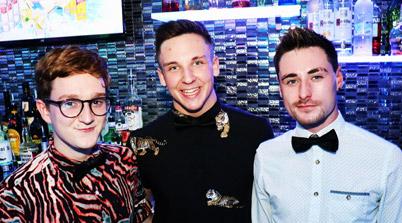
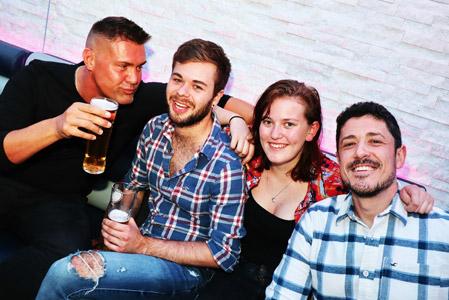
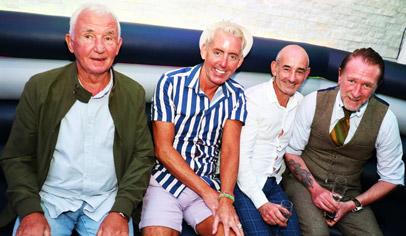
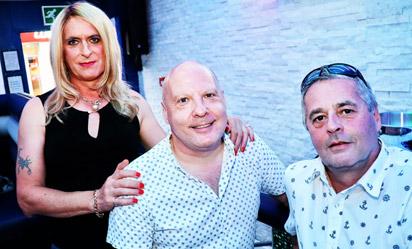

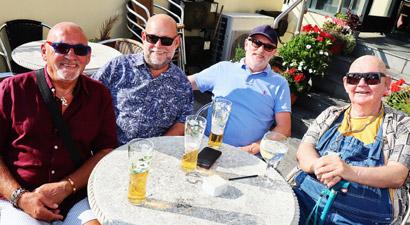
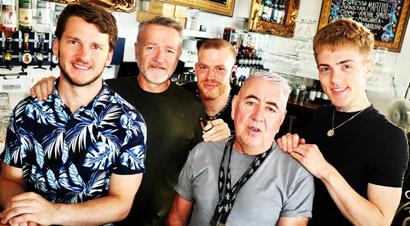
AMSTERDAM
AMSTERDAM
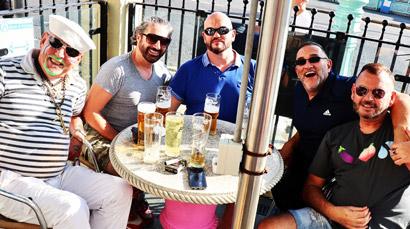
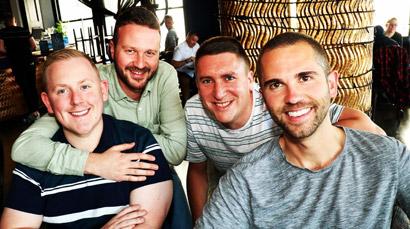
AMSTERDAM
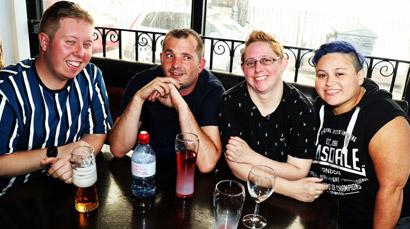

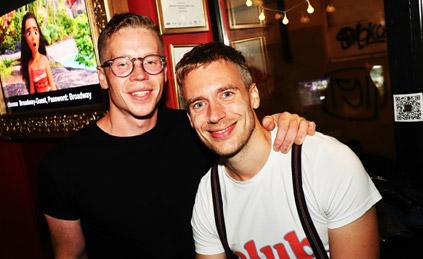
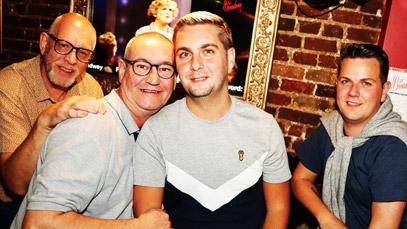
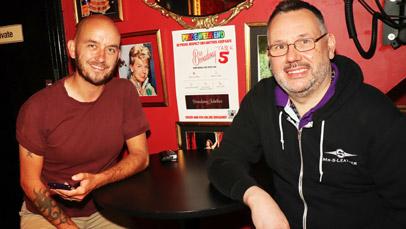
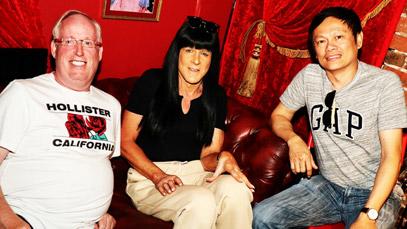
BULLDOG
BULLDOG
BULLDOG
BULLDOG
BULLDOG
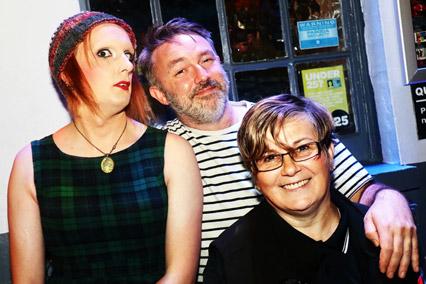
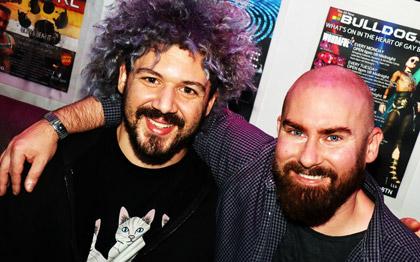
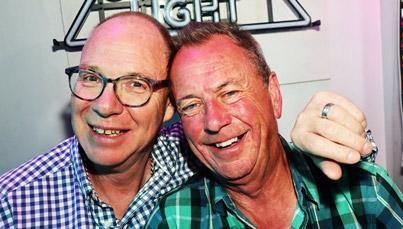
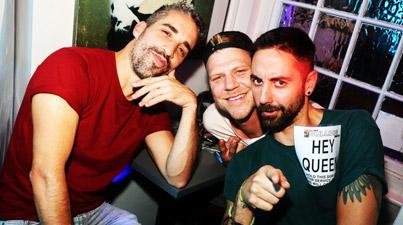
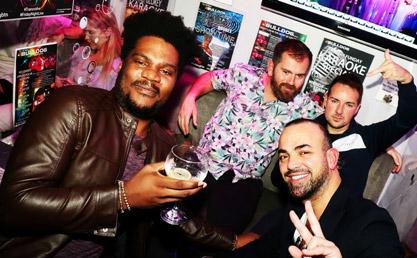
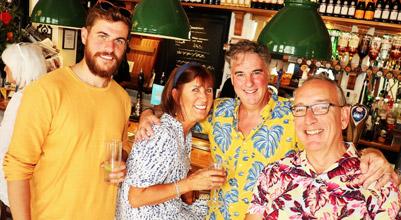
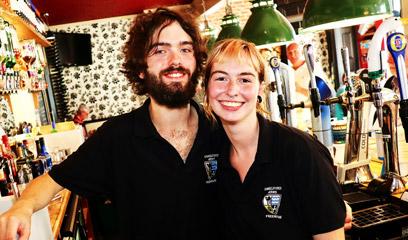
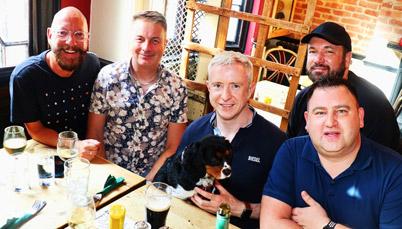
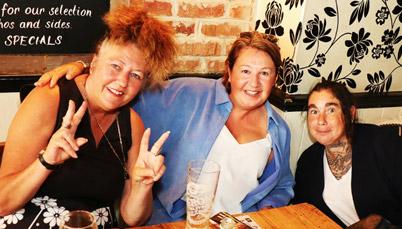
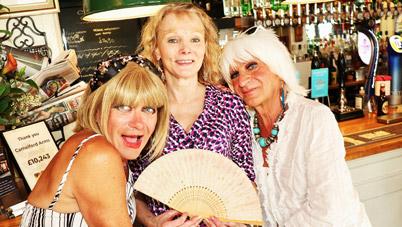
CHARLES STREET TAP

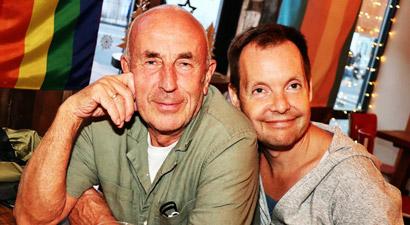
CHARLES STREET TAP

CHARLES STREET TAP

CHARLES STREET TAP

CHARLES STREET TAP
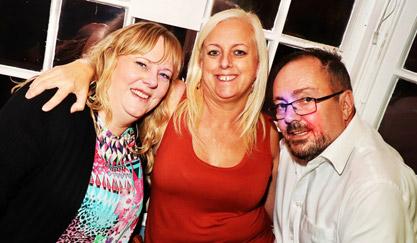

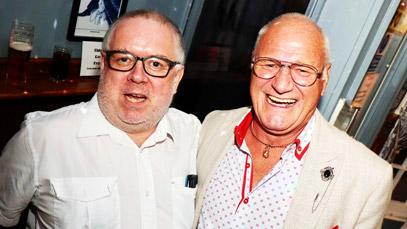
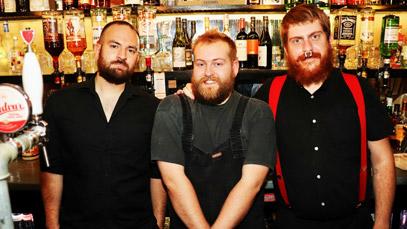

LEGENDS
LEGENDS
LEGENDS

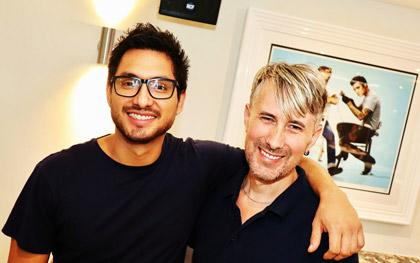
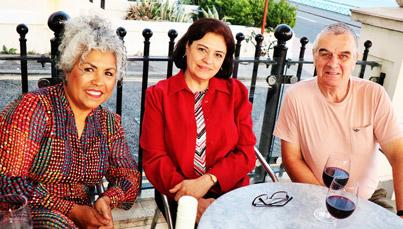
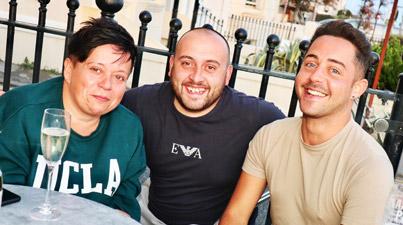
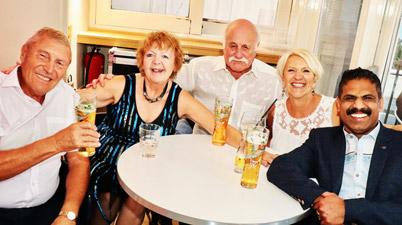
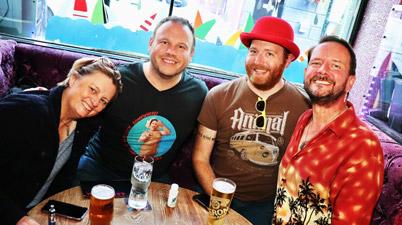
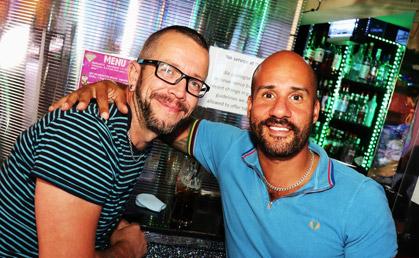

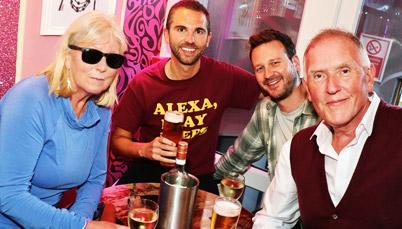
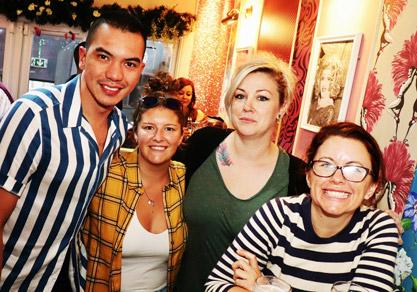

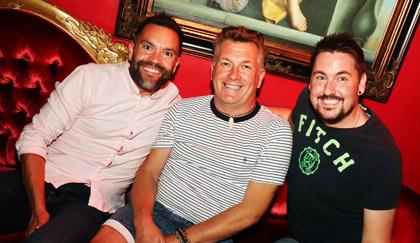
REGENCY TAVERN
REGENCY TAVERN

REGENCY TAVERN

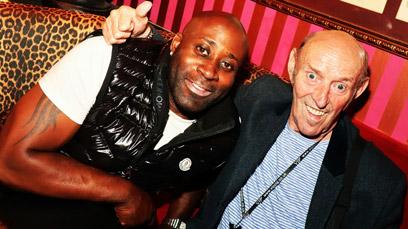
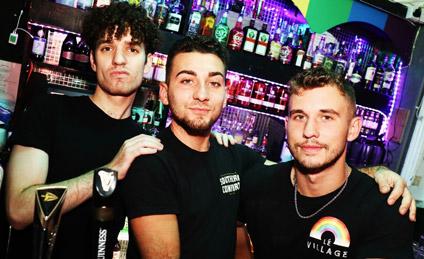
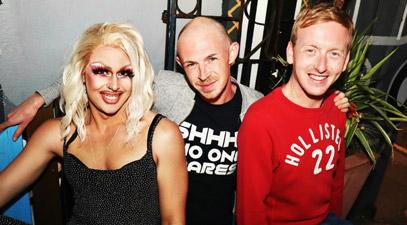
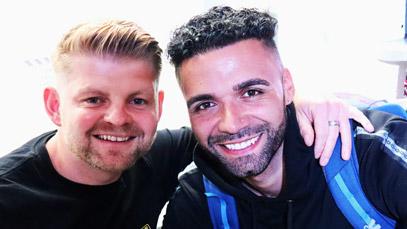
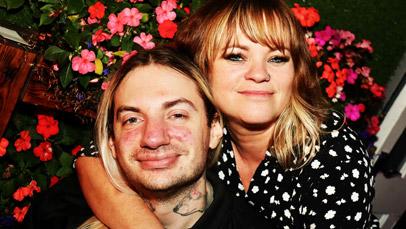
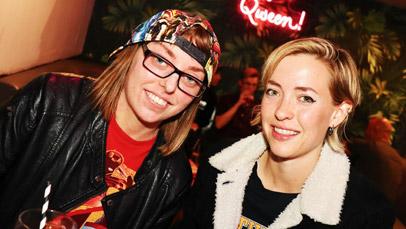
VELVET JACKS
VELVET JACKS
VELVET JACKS

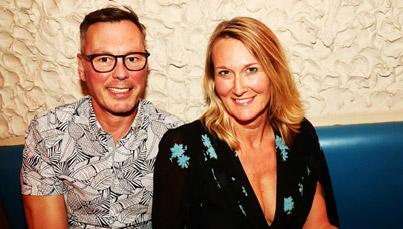

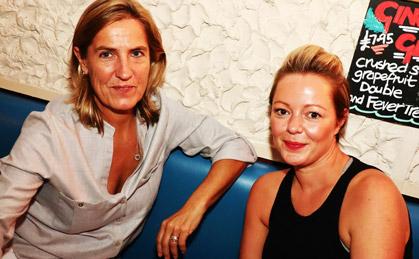
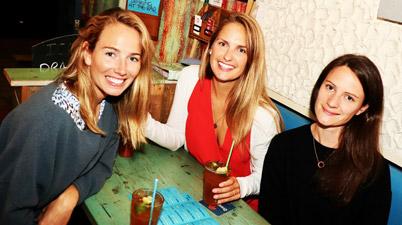
SHOPPING
WITH MICHAEL HOOTMAN
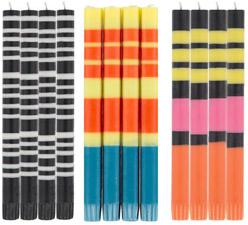
( Dowse , 27 Gloucester Road, Brighton) ) Kay Bojesen Lovebirds, £99
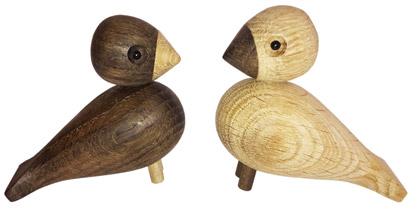
) Candles 4 for £16 (Hold, 14 Bond Street, Brighton)
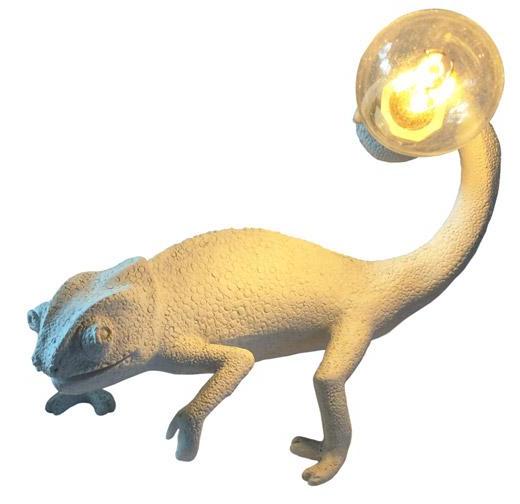
) Chameleon Lamp, £90 (England at Home, 22b Ship Street, Brighton, 01273 205544)
) Love Bracelet, £75 (Pussy, 3a Kensington Gardens, Brighton, 01273 604861)
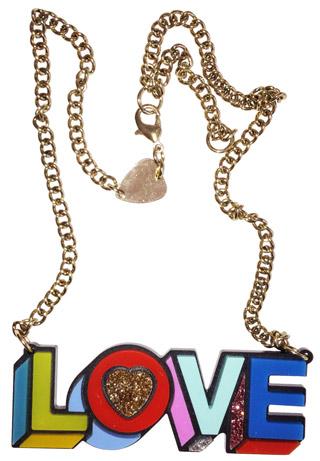
) Clay Stem Vase, £130 (Workshop, 13a Prince Albert Street, Brighton, 01273 731340)
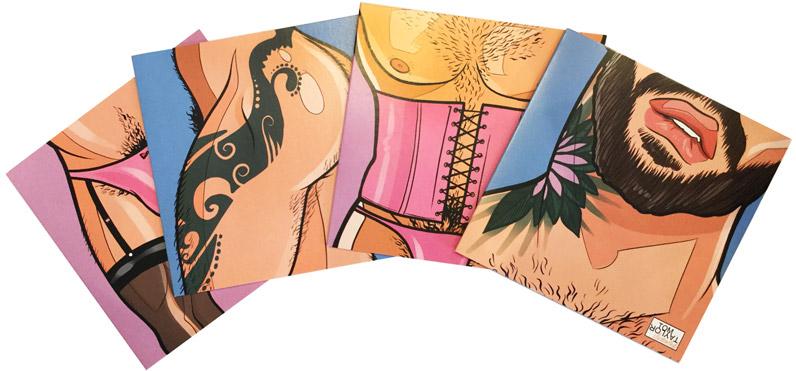
) AFTER THE FOX (BFI Blu-ray). This mid-1960s heist comedy has a lot of talent involved: its director is Vittorio De Sica (Bicycle Thieves), the writer is playwright Neil Simon and it stars Peter Sellers. Sellers plays an Italian career criminal who imports some stolen gold by pretending to make a film about criminals importing stolen gold. Evidently it's gained a cult following for the way it parodies pompous directors and pretentious film critics (though the satire is so obvious, and so ridiculous, it’s barely satire). Victor Mature as the Hollywood film star who hasn’t come to terms with the ageing process probably gives the best performance - and, for me, delivered the sole laugh - but on the whole the film's cultural and entertainment value is minimal.
) MADEMOISELLE (BFI Blu-ray). Tony Richardson’s movie, based on a script by Genet, is atypical for a director associated with social realism (Look Back in Anger, A Taste of Honey) but it could well be his masterpiece. Jeanne Moreau's icy charisma lends itself perfectly to the role of a teacher in a French village who - for reasons which aren't elucidated - commits various acts of malign cruelty. An itinerant Italian woodsman is blamed by the small-minded villagers, while his son is routinely humiliated by Moreau. David Watkins’ black and white Scope photography is stunning and somehow imbues the beauty of the countryside with an almost sinister sheen. The movie is mythic rather than psychological which may infuriate some viewers - and a famous shot of Moreau caressing the woodsman’s snake is, no matter how much intellectual justification the director may have had, laughable as a Freudian cliche. In many respects it seems to have influenced Michael Haneke’s The Piano Teacher (the two films' protagonists seem to share the same malign character and I don’t think it’s a coincidence they’re both teachers). Strange, unsettling and mysterious, Mademoiselle is truly one of a kind.
TRANS PRIDE MEMORABILIA
) Trans Pride Brighton has announced a collaboration with Trans Shop UK on Etsy to offer people a limited opportunity to bag some old Trans Pride Brighton swag, including two T-shirt designs from 2018 and a batch from the 2019 event. Trans Pride Brighton says: “This is a great opportunity to snatch up memorabilia, help Trans Pride Brighton and support a trans-owned business in one fell swoop. Visit the Trans Shop UK Etsy shop and pick some complimentary pins for your future Trans Pride Brighton T-shirts!” D To buy, visit: www.etsy.com/uk/shop/TransShopUK D For more info on Trans Pride Brighton, visit:
www.transpridebrighton.org
FAT PIGEON ART BY SYD SPENCER
FAT PIGEON DRAG QUEEN CHRISTMAS CARDS IN AID OF THE BRIGHTON RAINBOW FUND
) So, Christmas is coming and we’re all getting fat... or something like that. The coronavirus has certainly had an impact on every aspect of our lives and with Christmas just around the tinselled corner we’re all probably wondering what the celebrations will be like this year. Charities have been badly affected. Donations are down by as much as 70% and at a time when the demand for their help is probably higher than ever. Families may well be separated this Christmas due to local lockdowns and sanctions, which will no doubt put a dampener on things.
But what can we do? How can we support the local charities as well as bring laughter to our loved ones, even if we are forced apart? Fat Pigeon Art had an idea to at least help out a little. Collaborating with UK drag queens, including Kara Van Park, Dave Lynn, Lola Lasagne, Davina Sparkle, Sally Vate, Miss Jason and Spice, a series of 12 Christmas cards have been designed with 50% of sales going directly to the Rainbow Brighton Fund, to help support our LGBTQ+ community. Humorous and colourful, they should bring a little bit of Christmas cheer to all who receive one. The cards are bright, funny and a real tribute to our gorgeous drag queens. They are limited, so get your orders in quick. If you want to reserve and pay before then, get in touch using the info below. So, where? When? How much? I hear you all cry... They’ll be available to purchase from the end of October online via the Fat Pigeon Art Instagram and Facebook pages, at The Grosvenor Bar thanks to Collin and his crew, and at The Brighton Bird Cage thanks to Wain aka Kara Van-Park. They come in packs of 12 and cost £15 a pack. Fat Pigeon Art also has a big collection of celebrity prints, mugs, Tshirts and other items available now on Instagram. Check it out! So, all that’s left to say is buy buy buy and carry on supporting our amazing LGBTQ+ community.
MORE INFO
E fatpigeonartbrighton@outlook.com D https://fatpigeonart.uk F I @fatpigeonart T @fatpigeonart1 E The Grosvenor Bar, 16 Western Street, Hove, BN1 2PG E The Brighton Bird Cage, 35 Gloucester Road, Brighton, BN1
ARTS NEWS
IRIS PRIZE LGBTQ+ FILM FESTIVAL 2020
) The wait is over for 15 filmmakers as the organisers of the Iris Prize, the Cardiff-based international LGBTQ+ short film prize, have announced the directors of the short films competing for this year’s Iris Prize Best British Short, supported by Film4. For the first time in the festival’s history, UK audiences can join in the experience by watching all the nominated shorts for free online. It also means the Iris Prize, which runs October 6-11, will be reaching a wider audience than ever.
Audiences can explore a multitude of stories reflecting richly diverse
LGBTQ+ experiences of contemporary British life in cities or countryside.
The filmmakers invite audiences on journeys of self-discovery and belonging from childhood into old age. These are tales of falling in and out of love, addressing personal battles lost and battles won, all filled with tears, laughter or hope. The films are billed as “a joyous celebration of how we express our individuality in our community, our family, and the wider world, helping to bring us together”. The shortlist of 15 films are: Better by Michael J Ferns; Cindy by Rosanagh Griffiths; Dungarees by Abel Rubinstein; Go Home Polish by Ian Smith; Just Me by Adam Tyler; Mandem by John Ogunmuyiwa; My CINDY God, I’m Queer by Matt MahmoodOgston; Paint the Dragons’ Eyes by
James Lucas; Pompeii by Harry Lighton, Marco Alessi & Matthew Jacobs
Morgan; Queens by Nick Bechman; Queering Di Teknolojik by Timothy
Smith; Rhiw Goch (On the Red Hill) by Anna Winstone; The Passing by
Nichola Wong; The Scene by James Corley; Wings by Jamie Weston.
This year also marks the first new three-year sponsorship agreement with British producer/ broadcaster Film4, which will acquire broadcast and streaming rights to each film.
Berwyn Rowlands, festival director, commented: “Congratulations to the Class of 2020.I hope that the many thousands who have shown an interest in Iris but have been unable to join us in Cardiff for our annual celebration of LGBTQ+ cinema, will get a better idea of what the fuss is all about. These films are without a doubt the best of the best.”
Tim Highsted, senior editor, acquired feature films for Film4, added:
“The Iris Prize, with its focus on diversity, inclusion and new voices, and its setting in Cardiff, is a perfect fit for Film4. Short form content is a critical proving ground for rising talent, but with new platforms allowing for a wider range of voices to be heard, it’s also increasingly a draw for viewers. We’re looking forward to giving these filmmakers a chance to reach a nationwide audience through Film4 on All 4.”
All of the nominated films are eligible for consideration for BAFTA and can automatically be entered by the filmmakers. You can view all the shortlisted films with extra details about the directors by visiting www.irisprize.org/bestbritish/
Thirty-five international filmmakers will compete for £30,000 prize as organisers of the Iris International LGBT+ Short Film Prize, supported by the Michael Bishop Foundation, have announced this year’s shortlisted films. To see the full list of films, visit:
www.irisprize.org/irisprize/
Directors from India, China, Brazil and Macedonia compete with counterparts from the UK and around the world, offering dramatically diverse representations within the global LGBTQ+ community. The one uniting factor in all 35 films is an exhilarating celebration of lives of
LGBTQ+ people across the world. To see a trailer of shortlist films, visit:
www.youtube.com/watch?v=tmRHc6DtLBg&feature=emb_title
) The 64th BFI London Film Festival (Oct 7–18) in its necessarily reimagined format announced its ambitious programme including 50 virtual premieres, previews at BFI Southbank and screenings in cinemas across the UK.
AMMONITE LGBTQ+ highlights include: Ammonite directed by Francis Lee and starring Saoirse Roman, Kate Winslett and Fiona Shaw. Set in 1840s England, it tells the story of acclaimed but overlooked fossil hunter Mary Anning, and a young woman sent to convalesce by the sea. Their intense relationship alters their lives forever.
Days, directed by Tsai MingLiang, stars Kang-Shen Lee, Anong Houngheuangsy. Kang lives in a big house while Non is in a small apartment in the town; they meet, then part, their days flowing on as before. If It Were Love, directed by Patric Chiha, stars Philip Berlin, Marine Chesnais and Kersten DaleyBaradel. Fifteen young dancers tour a dance show on the 1990’s rave scene. Following them from ) She Does Filmz is a new streaming platform showcasing exclusively female-led films. Women filmmakers are getting the chance to showcase their talents thanks to the forward-thinking and inclusive She Does Filmz, which was set up by film fans who noticed that work by women filmmakers received less distribution than the work of their male counterparts. By subscribing, you can watch some of the best in theatre to theatre, the film documents their work as well as their strange intimate relationships. It’s billed as a journey into our nights, our parties, our lives.
Cicada, directed by Matthew Fifer and Kieran Mulcare, stars Fifer, Sheldon D Brown and Sandra Bauleo. In New York City in 2013, a young bisexual man enters an interracial relationship. Against the background of a cicada summer, he comes to terms with his own childhood trauma.
SUPERNOVA
Supernova, directed by Harry Macqueen, stars Colin Firth, Stanley Tucci and Pippa Haywood. Sam and Tusker, partners for 20 years, travel across England in their RV to visit family and friends and places from their past. Diagnosed with early onset dementia, Tusker realises their time together is the most important thing they have.
To view the full programme, visit:
www.bfi.org.uk/london-film
SHE DOES FILMZ STREAMING PLATFORM
festival
filmmaking by women including The Watermelon Woman, written, directed and edited by Cheryl Dunye. This ground-breaking film stars Dunye as Cheryl, a young, black lesbian who, between working her day job, is trying to make a film about a black actress from the 1930s. Sweet, romantic and funny, The Watermelon Woman was declared 'an impressive landmark work' by Vanity Fair. She Does Filmz brings iconic films past and present with no censorship, no taboos but with guaranteed film-festival quality! For more info, visit:
www.shedoesfilmz.com
SARAH HEGAZI MURAL, PIC: SARA ALSHERIF
SARAH HEGAZI MURAL York Grove, Brighton, BN1 3TT
) A mural for Egyptian human rights activist Sarah Hegazi, who took her own life while living in exile in Canada after being arrested, detained and tortured for raising the LGBTQ+ flag at a concert in Cairo in 2017, was revealed at York Grove, Brighton last month. The mural includes Sarah’s final words: ‘To the world. You were cruel, but I forgive you’ and Sara Alsherif, who organised the mural painting event, played Sarah’s favourite music while artists worked on it. Sara Alsherif, said: “Thank you to the fantastic artists, and everyone who helped to bring this mural to the light.”
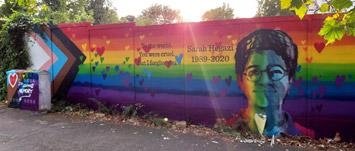
SARAH JANE MOON INCLUDED IN ROYAL SOCIETY OF PORTRAIT PAINTERS’ EXHIBITION
) LGBTQ+ artist Sarah Jane Moon‘s portrait Nicole & Kai was included in the Royal Society of Portrait Painters‘ Annual Exhibition at Mall Galleries, London last month. Sarah Jane Moon, an LGBTQ+ artist whose work explores identity, sexuality and gender presentation as well as interrogating formal painterly concerns, describes her portrait Nicole & Kai as “a portrait of two wonderfully creative women who live in Amsterdam and are friends of mine through the queer community”. ) Many of the works are available to view online: therp.co.uk ) For more info on Sarah Jane Moon, visit: www.sarahjanemoon.com
HOW ‘BOUT A CUPPA TEA?
) Lesflicks, a film enthusiast launching Lesflicks as an initial website focusing on LBQ stories concept, that we’d be fast tracking about women who love women, our launch and attracting so many has secured the first womennew films and a growing audience. loving-women short film about life Since March we’ve run over 35 in a world hit by Covid-19. How events online and re-entered the ‘Bout a Cuppa Tea, written and cinema to support the release of Summerland and adding over 50 films to the platform to meet growing demand. Lesflicks is a parttime volunteer-led organisation still in the bootstrapping phase and so I couldn’t be prouder of the team of directed by Jan Miller Corran, amazing women who have joined delves into the silver linings that my vision and helped us achieve can accompany isolation. While everything we have so far!’ many feel isolation is suffocating, For more info on Lesflicks, visit: this gentle story shows that you www.lesflicks.com are not alone, and that positives can result when you’re forced to stop living in the rat race. Naomi Bennett, Lesflicks founder, said: “I never in my wildest dreams thought that 18 months after ART MATTERS BY ENZO MARRA
This month I hope you won’t mind me presenting you with a trio of exhibitions that I’m included in this October, some nearby but others maybe a bit too far to travel to in the current circumstances.
HASTINGS MUSEUM AND ART GALLERY Hastings, www.hmag.org.uk
) Beginning with the HASTINGS OPEN where my painting Self Portrait As Archaic Sculpture will be on show till January 3, 2021. The Hastings Open is a major openentry art show celebrating the creative talent of artists and makers from across the world. The exhibition brings together pieces from artists working in painting, ENZO MARRA sculpture, drawing, photography, digital and more, selected by a panel of practising artists and curators.
PINEAPPLE BLACK GALLERY Middlesbrough, www.pineappleblack.co.uk
) ENOUGH IS DEFINITELY ENOUGH (till Oct 17) includes 60 contemporary artists who have made new artworks in response to a postcard version of Velázquez’ Las Meninas, inspiring a huge variety of different artistic responses to the Spanish painter’s masterpiece. The artists in this exhibition build upon previous interpretations by renowned artists such as Pablo Picasso, Richard Hamilton, Francesco Goya and Eve Sussman. With these new artworks there is potential for new relationships with Velázquez's original painting to open up. Curated by Andrew Bracey, and forming part of his PhD research at University of Lincoln, it explores how contemporary artists use and appropriate existing paintings by other artists, through a position of using the metaphor of the parasite and symbiosis in connection with painting. The exhibition is touring from General Practice, Lincoln and Oceans Apart, Salford, with new artists being added for Pineapple ENZO MARRA Black.
BEANEY HOUSE OF ART & KNOWLEDGE Canterbury, www.canterburymuseums.co.uk/beaney
) THE MUSEUM OF YOU (till Oct 18) includes two of my paintings and celebrates the creativity, stories and experiences of visitors and the local community, during the coronavirus pandemic. Every fortnight during the countrywide lockdown it released a new theme to inspire its audiences with ideas of art they could create. These themes were based on the six ways to wellbeing; Be Kind (in partnership with People United), Be Connected, Be Mindful, Be Active, Be Green and Be Inspired. Participants were encouraged to be as imaginative as possible. The responses varied in mediums from paintings, drawings and photographs, to textile, prints and other methods. The collective result is an inspiring snapshot of the lives of ordinary people during an extraordinary period in history.
ELYSIUM GALLERY Swansea, www.elysiumgallery.com
) Finishing with a solo art in the bar exhibition (Oct 3-Nov 7). The Elysium Gallery has become an effective and active arts provider within the Swansea community. Since 2007 Elysium has grown from a small roaming pop-up organisation to Wales’s largest studio provider and a gallery programme that has presented over 145 exhibitions featuring national and international artists.
CLASSICAL NOTES BY NICK BOSTON
REVIEWS
) JEAN-EFFLAM BAVOUZET Piano Concertos of Beethoven (Chandos CHSA5273). French pianist JeanEfflam Bavouzet turns his attention to the five Piano Concertos of Beethoven (1770-
1827) for his latest project. He also throws in a performance of the Quintet for Piano and Winds, for which he is joined by players from the Swedish Chamber Orchestra, who play alongside him in the concertos.
Beethoven’s five concertos span well over 20 years of his career, and sketches exist at either end of concertos from as early as 1783 and as late as 1815. Here the five completed concertos are placed in order of their composition, so No. 2 in B flat major comes first, as it was actually composed back in 1787, before No. 1 in C major from 1795. No. 2 is clearly Mozartian, but already with Beethoven’s stamp, with dramatic contrast of emphatic statements followed by delicate responses in the slow movement, and constant playing with the sense of downbeat and upbeat in the joyful Rondo.
No. 1 has the same sense of rhythmic confusion in its Rondo, and here Beethoven makes wonderful use of the clarinet in conversation with the piano in the slow movement. There is sprightly energy from the Swedish Chamber Orchestra throughout, and Bavouzet positively fizzes in the rippling runs, and attacks the finales with a great sense of fun. On the other hand, his delicacy of touch in the slow movements is delightful, and this comes to the fore again in No. 3 in C minor. The Swedish wind players are also prominent here, and their conversational exchanges with Bavouzet are subtle and poised. In the faster movements, Bavouzet’s tempi are always brisk, but never feel rushed, his fast runs always fluid and effortless.
No. 4 in G major moves things on to another level, with a much broader sense of architecture, from its prayerful opening, right through to the galloping finale. Again, the slow movement is conversational, this time between just strings and the piano, with Bavouzet and the Swedish players creating a moment of intimacy amidst the grandeur of the outer movements.
No 5 in E flat major is again on a grand scale, and there is a real sense of opening out here, with more expansive playing from both Bavouzet and the orchestra. The central slow movement is understated, and Bavouzet avoids over-sentimentalising proceedings – although I could have tolerated a little more indulgence here. But this is a minor point of taste –overall, this is an impressive collection, and I’ll definitely be returning to this frequently. The bonus Quintet is a treat – the Swedish players here play alongside Bavouzet with great style, creating a pleasing palatecleanser to round off the threedisc set.
) JOHAN LÖFVING Fandango! (Resonus Classics RES10260). Last year I reviewed a delightful recording from Flaugissimo Duo, who I first came across when they were part of the Brighton Early Music Festival’s BREMF Live! scheme. Now, one half of the duo, guitarist Johan Löfving, has recorded Fandango!, a collection of music for solo guitar from the late 18th and early 19th centuries, when the six-stringed guitar flourished in the salons and concert halls of Paris and Vienna. So the works on offer here vary from the Viennese classicism of Mauro Guiliani’s (1781-1829) Sonata Brillante, to the more explicitly Spanish influenced Fandango Variado by Dionisio Aguado (1784-1849), with its swirling dance rhythms and strumming flourishes. Interestingly, the guitar’s lack of ability to sustain notes creates interesting pregnant pauses in the slow movement of the Giuliani, but Löfving’s gentle vibrato manages to still make the melodies sing. French composer Napoléon Coste’s (1805-1883) Soirées d’Auteuil is unashamedly romantic, full of operatic melodies, virtuosic runs and cascading arpeggios, and Löfving has great fun here. In the brief Étude from Fernando Sor (1778-1839), Löfving’s touch is delicate and expressive, bringing out the duetting melodic lines with great sensitivity. Giulio Regondi’s (1822-1872) Introduction et Caprice, following its chorale-like opening, is full of dancing virtuosity, another chance for Löfving to demonstrate the fluidity of his playing. To close the disc, he is joined by the Consone Quartet, current BBC New Generation Artists, for a performance of Luigi Boccherini’s (1743-1804) Quintet No. 4. This opens with a warm Pastorale, full of birdlike violin twiddles and musette-droning lower strings. The sound here is somewhat muted, and the rippling guitar part is understated, with only a brief moment of emphasis towards the movement’s conclusion. The strings sound more insistent in the second movement, but again, perhaps with an aim to achieve the right balance with the quieter guitar, the overall sound is subdued, although energy picks up with rustic dancing and a joyful, trilling close to the movement. The final movement, after a dramatic introduction and guitar solo, launches into a spirited and lively Fandango, and here the performance takes flight. To add to the joyful sense of occasion, Nanako Aramaki joins in with castanets, and the energy rises to a spirited conclusion with lots of string tremolo and guitar strumming. A fun end to a very enjoyable disc, full of refreshing and sprightly-performed repertoire. ) IVORY DUO PIANO ENSEMBLE Elements of London (Convivium Records CR055). The Ivory Duo Piano Ensemble (pianists Natalie Tsaldarakis and Panayotis Archontides) and composers Hugh Shrapnel (b.1947) and John Lewis (b.1947) were completely unknown to me, so their new disc, Elements of London, combining movements from two collections by the composers, was a total voyage of discovery. Lewis’ pieces (Elements) are all inspired and named after chemical elements, while Shrapnel’s (London) are all associated with people, places and even politics of South London – hence the combined title of the disc – and they are mixed together to form an overall programme. Despite their
differing inspirations, the pieces fit together remarkably well, with influences of minimalism, jazz and blues cropping up throughout. Lewis makes use of insistent rhythmic repeated chords in Niobium, and minimalist influence is most evident in Mercury and Phosphorus. Yet there are Latininfused rhythms in Chlorine, and hints of Shostakovich in the gently romping Cerium. Shrapnel’s pieces are more overtly expressive, such as the atmospheric Ladywell Station (surely quoting Misty) with its background train whistles, and the plaintive, lamenting In Memoriam Jane Clouson. Dad’s Army even makes an appearance in Hunt Hunt, a defiant political piece dedicated to the Save the Lewisham Hospital Campaign. Few pieces are longer than five minutes, yet they are surprisingly effective in capturing a mood or energy. Tsaldarakis and Archontides have clearly developed a strong affinity for this music, and a close relationship with the two composers, and their performances are strong throughout, contrasting well the thicker chordal textures with bright melodies (often in belllike octaves), and enjoying the jazz-infused melodies. A very enjoyable discovery.
BRIGHTON EARLY MUSIC FESTIVAL BREMF@HOME – ACROSS THE EARTH
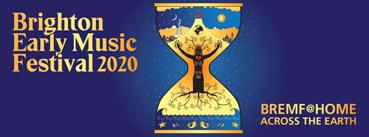
) For obvious reasons, there will sadly be no live concerts to attend in this year’s Brighton Early Music Festival (BREMF). However, undeterred, BREMF will present a series of events online instead, to be premiered on YouTube and remain online for a week. Although freely available, BREMF is requesting that viewers make a donation in place of buying tickets via www.bremf.org.uk. This is crucial, as most of their regular funders have diverted funds to emergency Covid-19 crisis aid. The festival will include a preevent on Wednesday, October 14, a brand new concert play from Clare Norburn, Love in the Lockdown, inspired by a 1348 quarantine in Florence, and performed by The Telling. Main events then run Friday, October 23 to Sunday, November 1. Pocket Sinfonia will perform Mendelssohn and Beethoven, adapted for chamber proportions, with animation and film of the natural world. Meanwhile, Spiritato! take the music of Heinrich Biber, and puppets made from recycled materials, to present Birds, Bugs and other Beasts – A Musical Menagerie. A 15th-century barn and the pastoral Sussex landscape are the setting for Ensemble Augelletti’s Arcadian Wilderness, with music by Handel, Corelli and others, while James Duncan from Sussex Wildlife Trust is joined by Piers Adams on recorders for Bird Charmer, a talk with music on the song birds of Sussex. Continuing the Sussex theme, Musicke in the Ayre will perform Sweet Ayres of Arcadia, set in the house and gardens of St Mary’s House, Bramber, in the Sussex Downs.
Father and son Dirk and Adam Campbell play new and traditional music on a variety of instruments from Africa and Asia in Connections, while Joglaresa introduce us to medieval songs of
SPIRITATO! protest in Rebellion!
JOGLARESA
Despite not being able to hold auditions for their prestigious BREMF Live! scheme this year, previous ensembles will be showcased with past and new footage of their musical activities. And as ever, the festival will end with a celebration – The Four Faces of Gaia. Four regions of Earth (Africa, India, the Middle East and Europe) and the four elements (Earth, Air, Fire and Water) combine in a celebration through traditional and early music and dance.
MORE INFO
For more reviews, comment and events, visit: N nicks-classical
notes.blogspot.co.uk
T @nickb86uk E nbclassical@hotmail.co.uk ALL THAT BY SIMON ADAMS
REVIEWS
) IDRIS ACKAMOOR & THE PYRAMIDS Shaman! (Strut). To get you up to speed, Idris Ackamoor is an American multi-instrumentalist, composer (and tap-dancer), born in 1951 and still going strong. Part of the black avant-garde, Ackamoor formed The Pyramids in the early 1970s. The band split up in 1977 but has since reformed and is now on its third new album. Ackamoor mixes his styles, from jazz funk, soul and tango to space-age trippyness and more, the whole shebang driven by congas and drums, some excellent flute from Margaux Simmons and raffish violin from Sandra Poindexter, topped off with the leader’s own fiery tenor and alto saxophones. His vocals have the same semispoken lilt as Gil Scott-Heron, their message here elegiac and often wistful. In a way this set sounds somewhat dated – perhaps a slice of 1970s soul jazz from Pharoah Sanders, perhaps, or the Sun Ra Arkestra on walkabout – but its good intentions and sheer 80 minutes of joy push everything gloriously forward. ) THUNDERCAT It Is What It Is (Brainfeader). And now for some real sonic mayhem, this time from Thundercat, or Stephen Bruner, as he is known to his mum. The man is a bass player of immense ability, but also a very fine songwriter and producer: he won a Grammy for his work on Kendrick Lamar’s seminal To Pimp A Butterfly. On this, his fourth album, he turns in his usual melange of deep funk, light-voiced soul and high-grade fusion loaded up with some jazzy instrumental excellence, studio wizardry, and celestial inspiration, all co-produced with Flying Lotus, one of the hippest and most in-demand men on the planet. Ethereal in places, pulsating and urgent in others, this is a summer set of froth and delight I was far too slow to review at the time, for which many apologies. Not jazz as most will recognise it, but so what. Just perfect. ) WOLFGANG MUTHSPIEL Angular Blues (ECM). Austrian guitarist Wolfgang Muthspiel plays both electric and acoustic guitar but in a subtle style. He keeps any rock affectations well hidden and showcases his jazz abilities through some unusual time signatures and a few displaced melodies that sound familiar but that you can’t quite place, as if he were playing a familiar tune in an unusual way. On this fine set he is ably supported on bass by Scott Colley, whose big, singing tone is always a joy, and on drums by Brian Blade, whose quiet accuracy and thoughtfulness always impress. The songs are all by Muthspiel, except a Cole Porter number and the concluding I’ll Remember April, totally reworked at the end of what is an unexpectedly strong set.

THE POSTMAN AND BROKEN HARTIST
The Postman’s LGBTQ+ visibility project, by Eric Page
) You may have noticed the huge LGBTQ+ icons appearing on public walls around the city over the past few weeks. Gscene spotted Hunter Florist on St James’s Street has an enormous image of trans DJ Honey Dijon with an accompanying explanatory text by Broken Hartist. The Sussex Beacon at the bottom of the street has a massive Freddie Mercury mural, sporting a red ribbon and welcoming all to Brighton’s ‘gay village’. Halfway up the hill, the Prowler shop has a duelling set of pop icons with Grace Jones and Kylie, who you may remember from last year’s Pride festival. There are a few other images scattered around to be discovered. The Postman’s street art has been popping up around the city and particularly in the St James’s Street area. We’ve also clocked a Blondie, Bowie and Martin Luther King. Another large trans mural can be found at the Brighton Dome hoardings on Church Street. It complements the recent Black Lives Matter mural on New Road. Both are supported by the Brighton Dome. Hove seafront’s orange barbecue bins portray a large selection of icons, including Dolly Parton, Whitney Houston and Madonna.
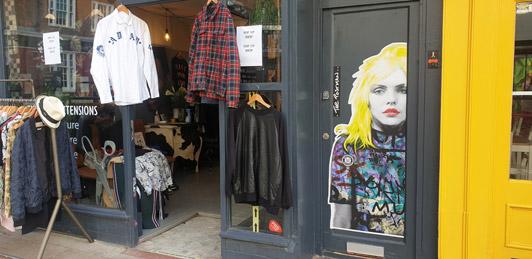
The viaduct on Preston Road is next on the list to have an updated mural on one of its large columns. This will repair the Freddie Mercury piece which was pasted up for last year’s Pride festival. Altogether, The Postman’s icons remind us that we, and our diverse LGBTQ+ community, are everywhere. The artist has an international reputation but is based in our city. Their work is instantly recognisable with its colourful punk style. Their idea is to place art in our daily lives and celebrate pop culture. The artworks educate, challenge and always entertain. In a year without Pride, Trans Pride or any of the other highly visible public community events which are usually held across Brighton & Hove, it’s important to have some strong sense of visibility on the streets that LGBTQ+ people live on, use and visit. We need to see ourselves represented in a range of ways, and on our own terms. Gscene managed to track down the modest and anonymous group of international artists who make up The Postman Collective and their friends Broken Hartist and asked them a few questions about this current project.
Hi Postman, tell us about your new project...
“This project involves a number of murals of iconic queer or LGBTQ+ individuals, displayed at agreed public spaces. Our works aim to cheer up the public during these strange times. We aim to celebrate LGBTQ+ culture in an impactful, yet respectful, culturally aware manner. Our works are durable, but non-permanently pasted up on the streets.”
Why now?
“Since Covid-19, we are aware of the loss of key LGBTQ+ community events and the visibility they provide for LGBTQ+ communities across the UK. The importance of ‘seeing yourself’ on the street and being in the presence of peers is not happening. This is a huge loss to many people and impacts on mental health. Pride and being visible in a safe way is a huge part of the empowerment of Pride events.”
Who do you feature?
“We generally feature pop icons past and present and iconic movie characters. But we have recently diversified our work by featuring key feminist icons, NHS workers and Black Lives Matter-related individuals. Our artwork is positive, carefully positioned, and has an essence of fun at its heart. We believe that public art can be both beautiful and empowering. Last year we joined forces with Brighton & Hove Pride. We hope there is much more to come.”
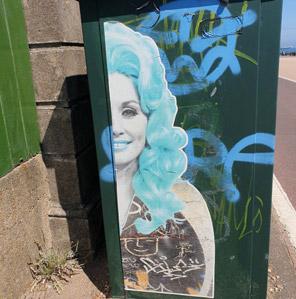
Who are the trans icons that you’ve used for this project?
“We’ve chosen two trans and non-binary activists and performers. Our friends Broken Hartist have added explanatory words to our murals, describing Amanda Lepore as per her own quote: ‘I really associate glamour with being happy. If you put on high heels and lipstick or get a new outfit, you feel great. It's a celebration of loving yourself, and the whole ritual of it is so great.’ For this design we’ve collaborated with UK photographer Marco Cerrone.
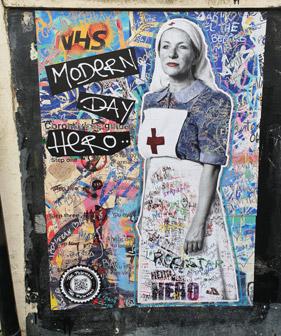
FREDDIE MERCURY @ SUSSEX BEACON SHOP
said: ‘I am a citizen of the world and a human being. I only want to engage in energy that heals and uplifts people. Of course I have views on things happening in humanity, but I can’t be everything for everybody. My mission as an artist is to bring people together, not separate them’. For this project we collaborated with local TNBI+ community members for ideas. Intersection is at the core of what we do. Visible representation is a very powerful way to support community cohesion and promote diversity. The quality of our designs ensures people see our work as art, which adds cultural weight to the representation of key marginalised groups.”
Why is this important?
“We understand the importance of queer space which is fully inclusive, open to all and accessible regardless of background. With traditional community spaces beyond reach and no cultural spaces open or LGBTQ+ events taking place, it is vital that communities feel visible, cherished and worthy of ‘taking up space’. “We offer an artistic intervention, street art, that is of the moment, inclusive and fun. This allows communities to see themselves represented on the streets, buildings and spaces they use in their everyday lives. In our opinion, public space is for everyone and should have a larger share of positive images of diversity and not just commercial advertising or company logos.”
Who are these artworks for?
“For all TNBI+, QTPoC and LGBTQ+ community, living, working or passing through the city and anyone else who enjoys them. We promote and engage with any community; our work is meant to be visually engaging with the whole city population and its visitors. We would hope that this project offers communities who are
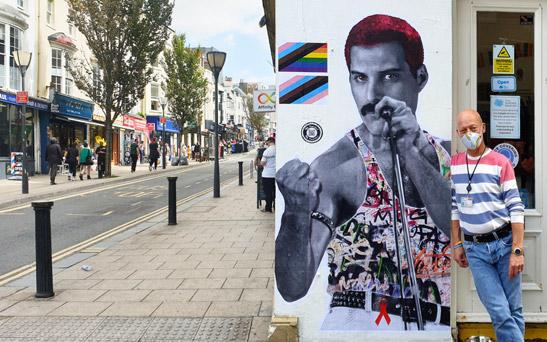
under-represented a visual reassurance of the public realm being inclusive, especially to trans and non-binary communities and QTIPoC groups who rarely, if ever, see themselves represented in public space. With our artistic icons we bring to the forefront their voices and provide a source of community, connection and emotional support in an engaging way which adds to the cultural fabric of the city and its environment.”
MORE INFO
) Check out The Postman and Broken Hartist fully accessible, free-to-enjoy artwork up and down St James’s Street and across the city. Grab a photo of yourself with one and #thepostmanart and #brokenhartist as well as us @gscene. For more info, visit D https://thepostmanart.com/ I /thepostman_art/ I /broken_hartist/
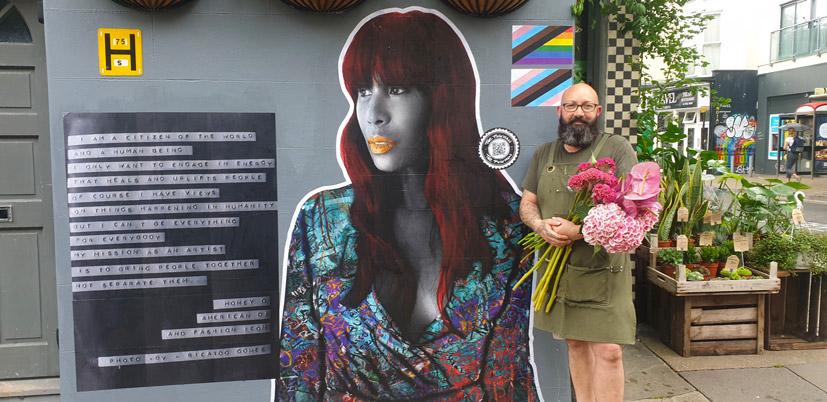
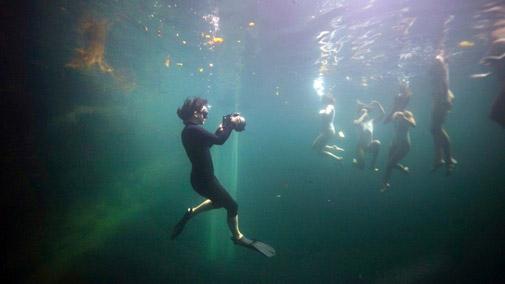

MAKING WAVES
Sussex-based underwater photographer Lexi Laine recently won the Beautiful Bizarre Magazine Art Prize 2020 iCanvas photography award, so what better time to showcase some of her incredibly beautiful pictures?
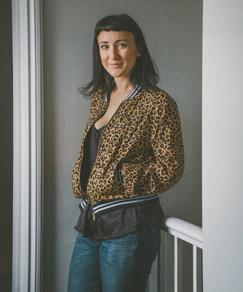
) How did you get into underwater
photography?
“I did a fine art degree in my early 20s and found myself drawn to photography as a medium. Since then I’ve spent the last 12 years or so building my career as a commercial photographer, shooting portraits, weddings, anything people based really. I think the artist in me longed for a creative project that could combine some of my passions, which is why around six years ago I decided to buy an underwater housing for my camera. I grew up as a bit of a water baby so I longed to take photographs in these beautiful places I had discovered under the waves.” underwater environment and how we as humans need to take better care of this vital resource. I started off making underwater portraits without any end goal of where the pictures would be shown - I had no brief to fulfill or client to satisfy. And for this reason I could experiment and play and push boundaries within myself and what I’m capable of achieving, both physically and creatively.”
It must be an extremely specialist area, what is the process for getting the image that you really want?
“So I guess the first thing I should mention is that I’m a freediver which means that everything I do is on a single breath hold. The same goes for the people I work with to
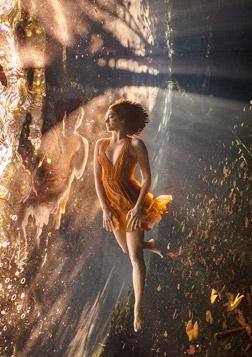
AKTUN-HA LEXI LAINE photograph underwater. So we train to be able to hold our breath for longer periods. I know a lot of underwater photographers use scuba equipment to be able to stay underwater long enough but I much prefer working without. When you remove all of that bulky equipment from the equation you can move a lot more freely in the water and you develop a much better connection to the environment and the person or people you’re shooting. “The locations I work in are almost always natural outdoor spots such as the sea or inland bodies of water. I think the two most difficult parts of what I do is finding models who look natural underwater and locations with clear enough water. But the difficulties involved in all of this is part of what I enjoy.”
How much of the final outcome do you leave to nature and the conditions on the day?
“I always start off shoots with particular ideas in mind for what I want to achieve. This begins with sketches normally and my ideas normally develop months before shoots happen. I often will travel to clearwater locations and spend up to a month shooting intensively. But even with months of planning, my ideas always develop when I am actually on location. The particular topography of underwater landscapes, the way
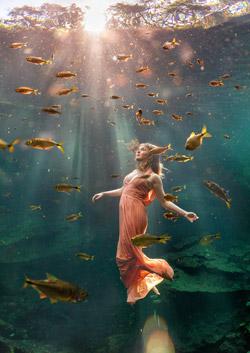
the light is on any given day and what different models bring to the shoots will often send my ideas off on little side tangents! It’s all part of the creative process.”
How long do you spend in the water on a shoot and how does that time pan out?
“That really depends on where we’re working and the time of year. So basically water temperature. Past locations I’ve worked in: Cornwall in May last year… Each shoot lasted around 20 minutes maximum before the shakes kicked in too much (for both me and my model). Or for example the Mediterranean in August, it’s possible to stay in the water for hours at a time and getting properly wrinkly before getting out!”
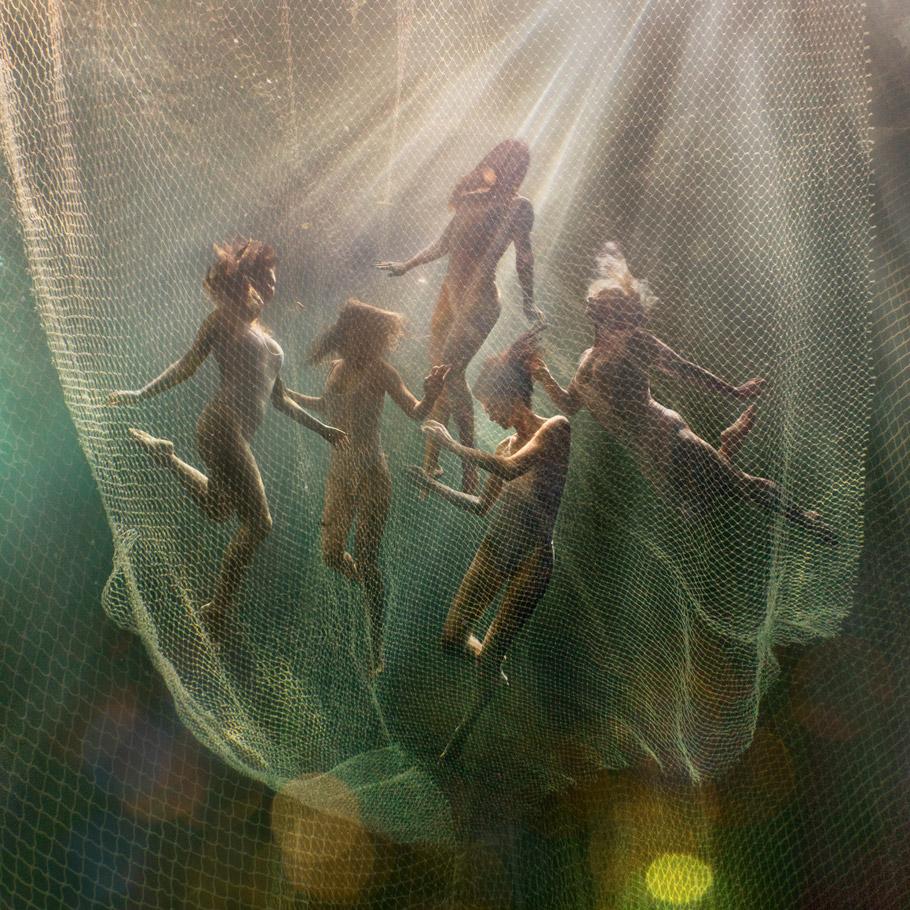
What are the important themes in your work?
“I love making images that feel ethereal or otherworldly and that celebrate the beauty of the underwater world. The themes that have meant the most to me are ones with a strong and sometimes disturbing environmental message. One piece I made last year, Single Use Planet, depicts a woman with large pieces of plastic bags. I combined multiple images of her holding the plastic in different parts of the water so that the overall image creates a loose depiction of the world map. I like to make images that seem aesthetically pleasing on first glance but have an underlying message that raises awareness of various climate based concerns. “Another piece I made very recently is called Ghost Nets and highlights the problem of plastic fishing waste discarded in the oceans by commercial fishing trawlers. These nets are a huge problem and lead to a lot of destruction of corals and killing of wildlife. This particular image was very challenging to make as it involved five underwater models and a huge ten metre fishing net. Safety during shoots like these is always the top priority and whilst it looks like the models are trapped in the net, they are actually just behind it and far enough away not to get tangled! I also of course had a safety diver on hand just in case too.”
What are you working on now and what do you have planned for the future?
“Well travel is a bit difficult right now and the water where I live near Brighton is not the clearest so it makes things a little challenging.
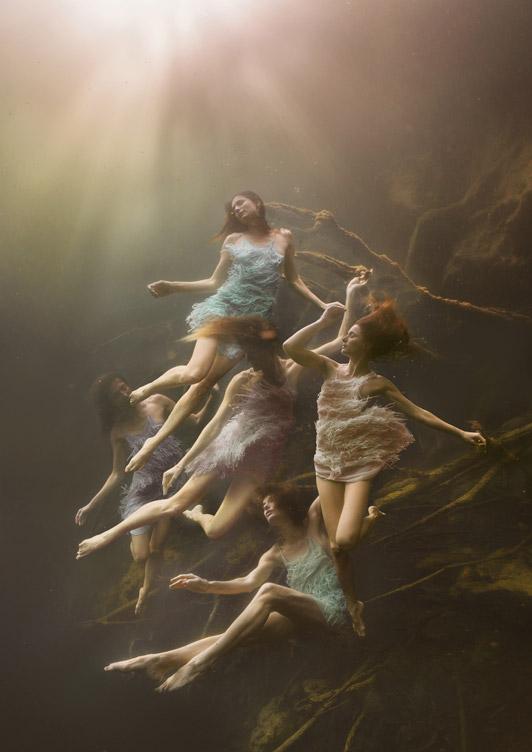
But restrictions always encourage an unplanned form of creativity I think so I’m embracing cooler waters around the UK. And I’ve also got a few exciting exhibitions to plan for so I’m keeping busy at the moment.”
Which artists inspire you?
“I love the aesthetic of historic painters - the way artists such as Rubens, Artemisia or Caravaggio used light in their work is very inspiring to me. Since lockdown restrictions have eased I’ve been enjoying visiting galleries again and just yesterday spent the afternoon at the National Gallery in London looking at all of the incredible Renaissance and Baroque artwork. Photographer wise, I love the work of Francesca Woodman, Tamara Dean and Brooke Shaden.”
Where’s your favourite location?
“I think probably the Yucatan peninsula of Mexico. I have shot in the fascinating cenotes of this region several times now. All the rivers in this area run underground and cenotes are
LEXI LAINE
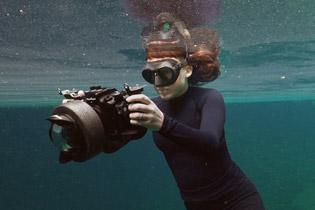
formed when the limestone bedrock collapses, exposing the groundwater beneath. They are basically these perfect little freshwater pools that are dotted around the jungle. It’s estimated that there are over three thousand of them in Mexico and the history behind them is really interesting. It’s believed that the ancient Mayans saw them as gateways to the afterlife and even made sacrificial offerings in them. They’re almost always really clear water so it’s perfect to photograph and I love how magical, eerie they feel.”
Where can we see your work?
“I’m exhibiting at The Other Art Fair at The Truman Brewery in London (October 8–11), The Contemporary Art Fair in Windsor (November 13-15), and on my website.”
How do you feel about coming first in the Beautiful Bizarre Magazine Art Prize 2020 iCanvas photography award?
“I keep thinking I’m going to wake up from this dream to be told it’s some kind of mistake. This prize is seriously the highest achievement I could wish for - I dared to put it on my list of goals last year without imagining it would ever actually come true. So all I can say is put these things out into the universe and ask for them. Sometimes the universe answers. Along with a very generous cash prize donation from @icanvas_art I’ve also been invited to have a piece of my work in an exhibition at the brilliant Modern Eden Gallery in San Francisco along with incredible exposure from Beautiful Bizarre magazine in both print and online.”
What is it about Sussex that made you want it to be home?
“I moved here with a group of friends back in 2007. We were all looking for a bit of a change and saw Brighton as somewhere that seemed exciting and different. I met my now wife in 2010 and we have settled in a little country cottage near Piddinghoe. It’s nice and quiet and we have space for our collection of rescue animals but it’s also super-easy to travel into Brighton and London so it feels like the best of both worlds really.”
How do you relax outside of your work?
“It sounds like a busman's holiday but I love sea swimming. I’m also part of a local freediving club in Brighton called NoTanx. Freediving as a sport is incredibly therapeutic, a lot of it is about breathing exercises and I find it very relaxing. Swimming pools are starting to reopen now thank goodness so our training can finally restart.”
What is your guilty pleasure?
“Errrrrr probably pineapple on pizza? Actually, there’s nothing guilty about that. It’s the best thing ever.”
MORE INFO
D www.lexilaine.co.uk F T /lexilainephoto/ D https://beautifulbizarreartprize.art/icanvas
photography-award-winners-2020/
D www.theotherartfair.com/octoberexhibitors/ D https://contemporaryartfairs.co.uk/windsor/










